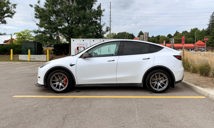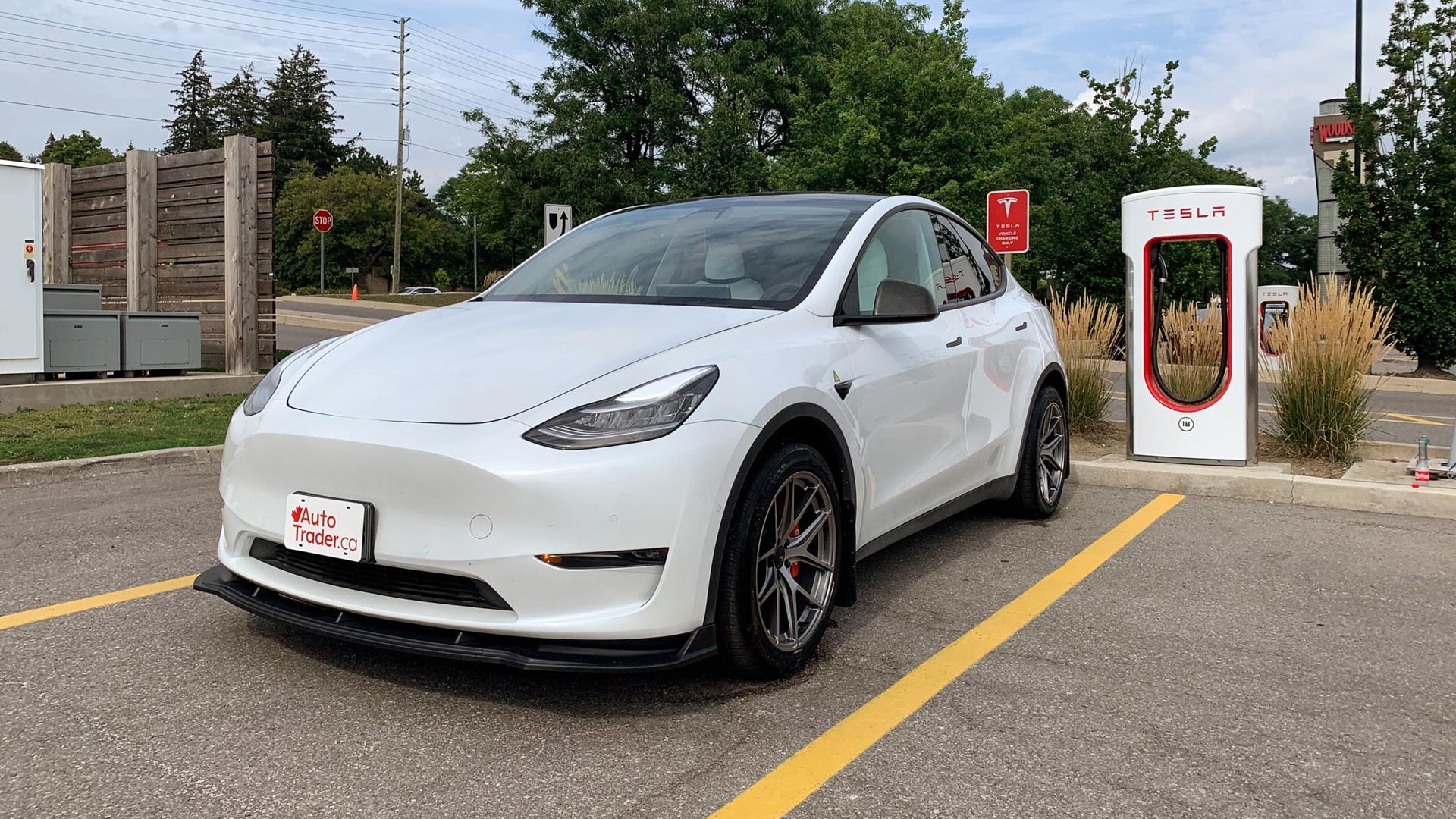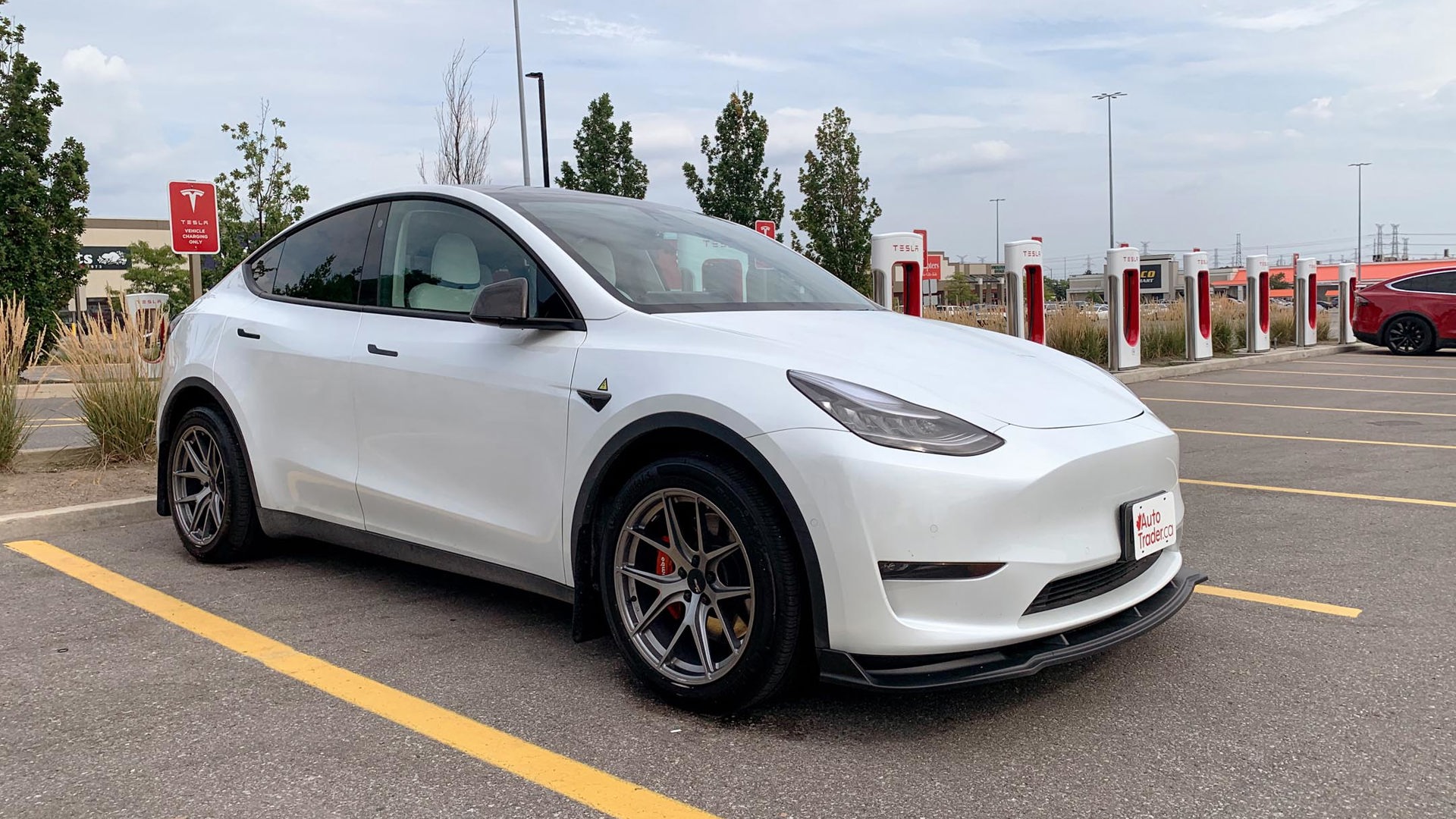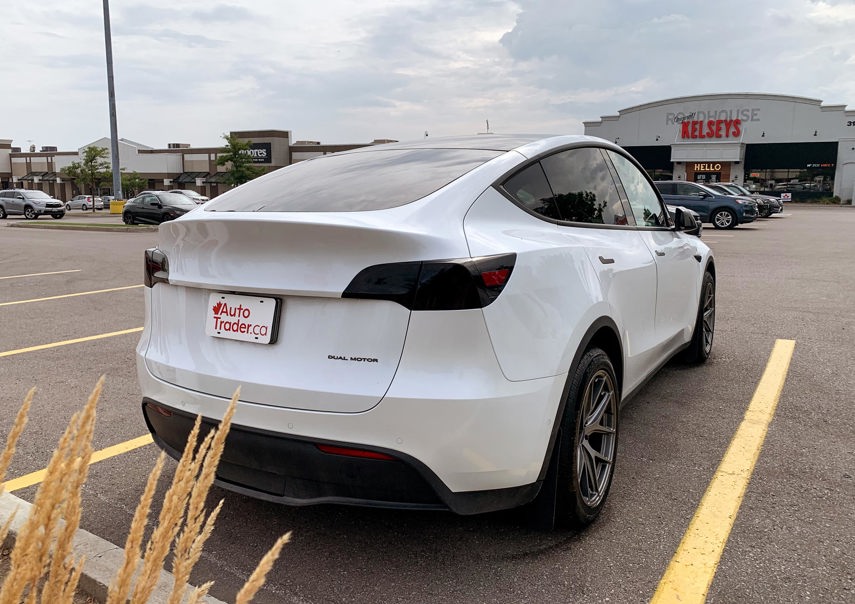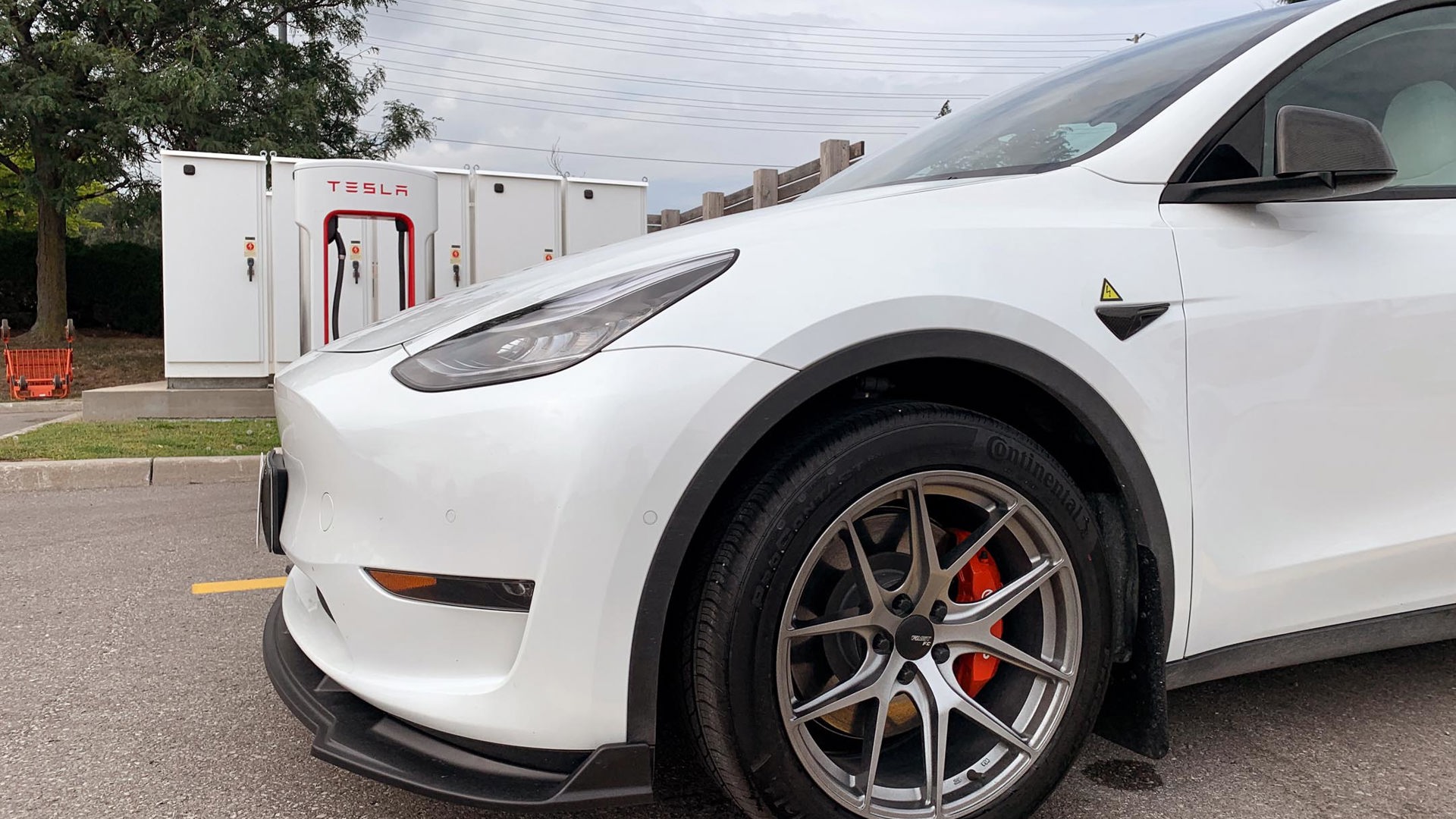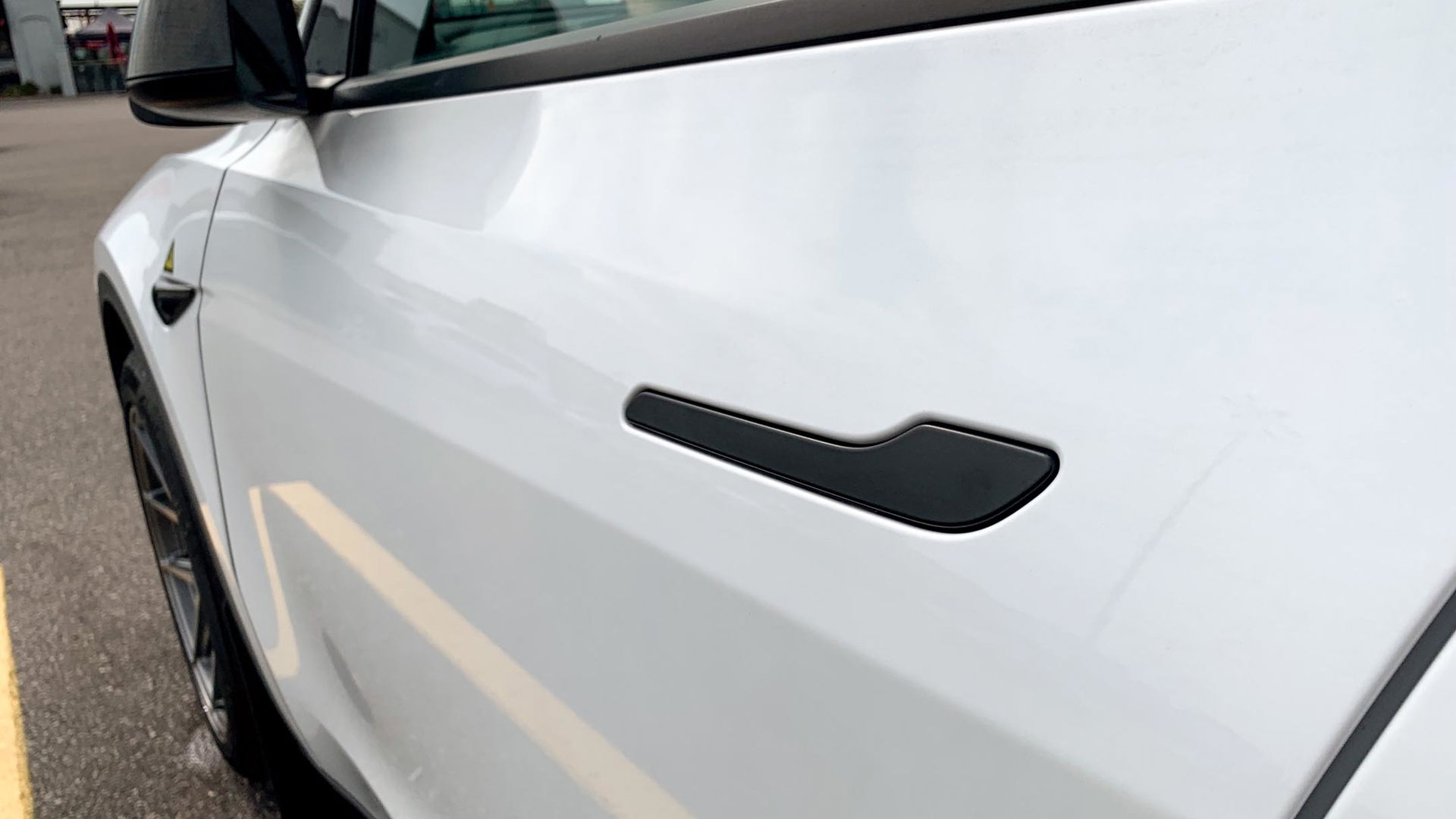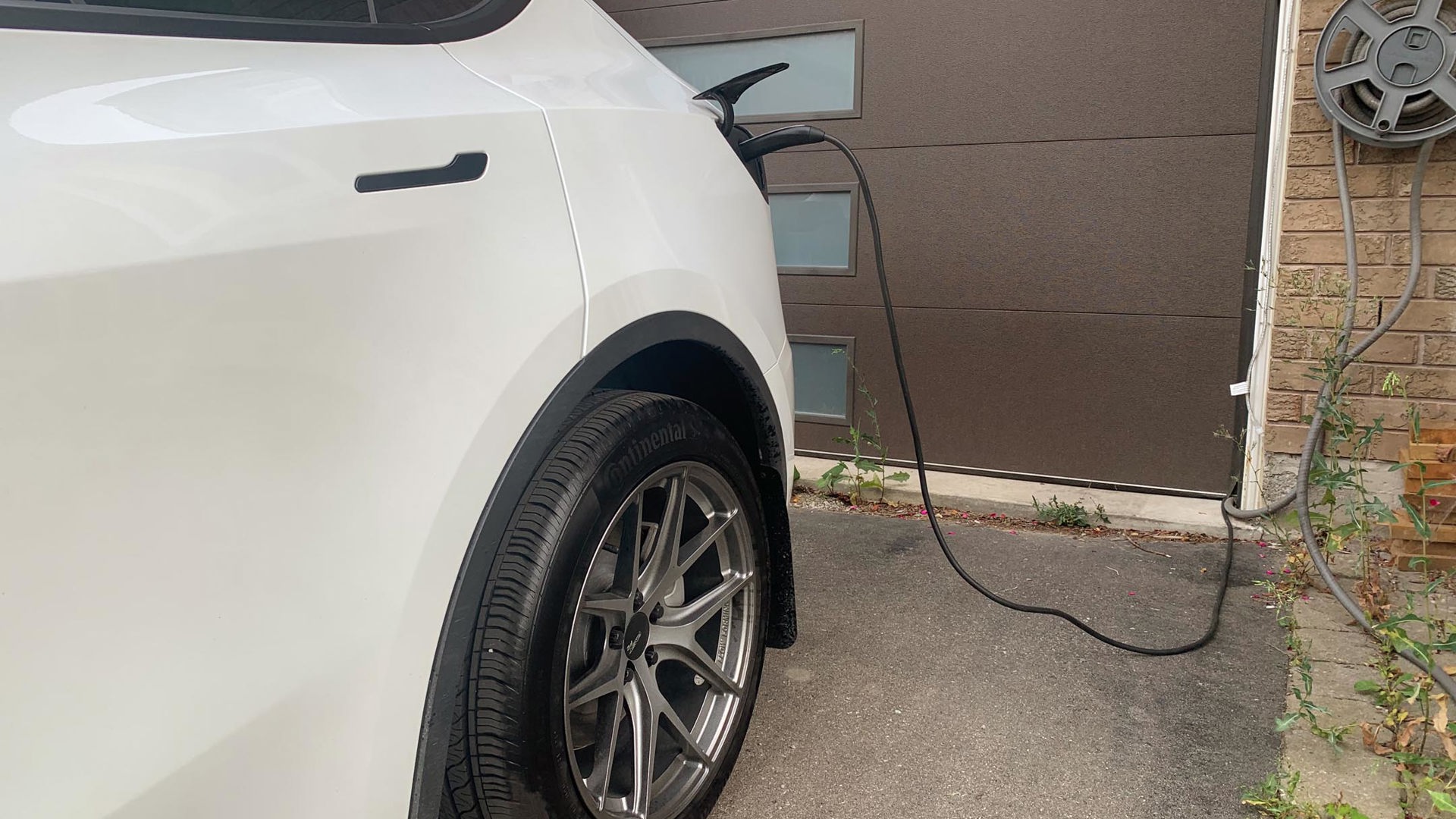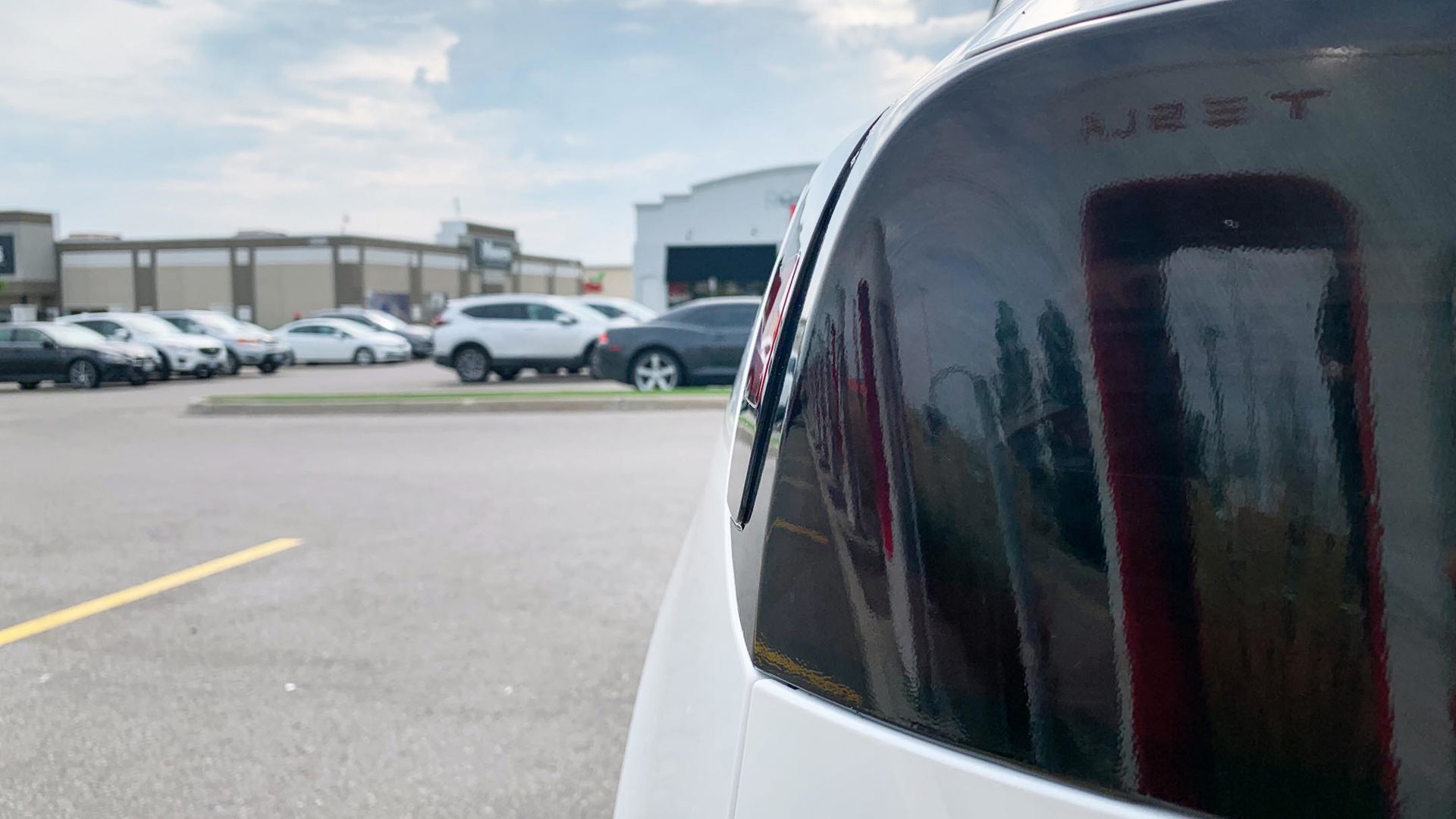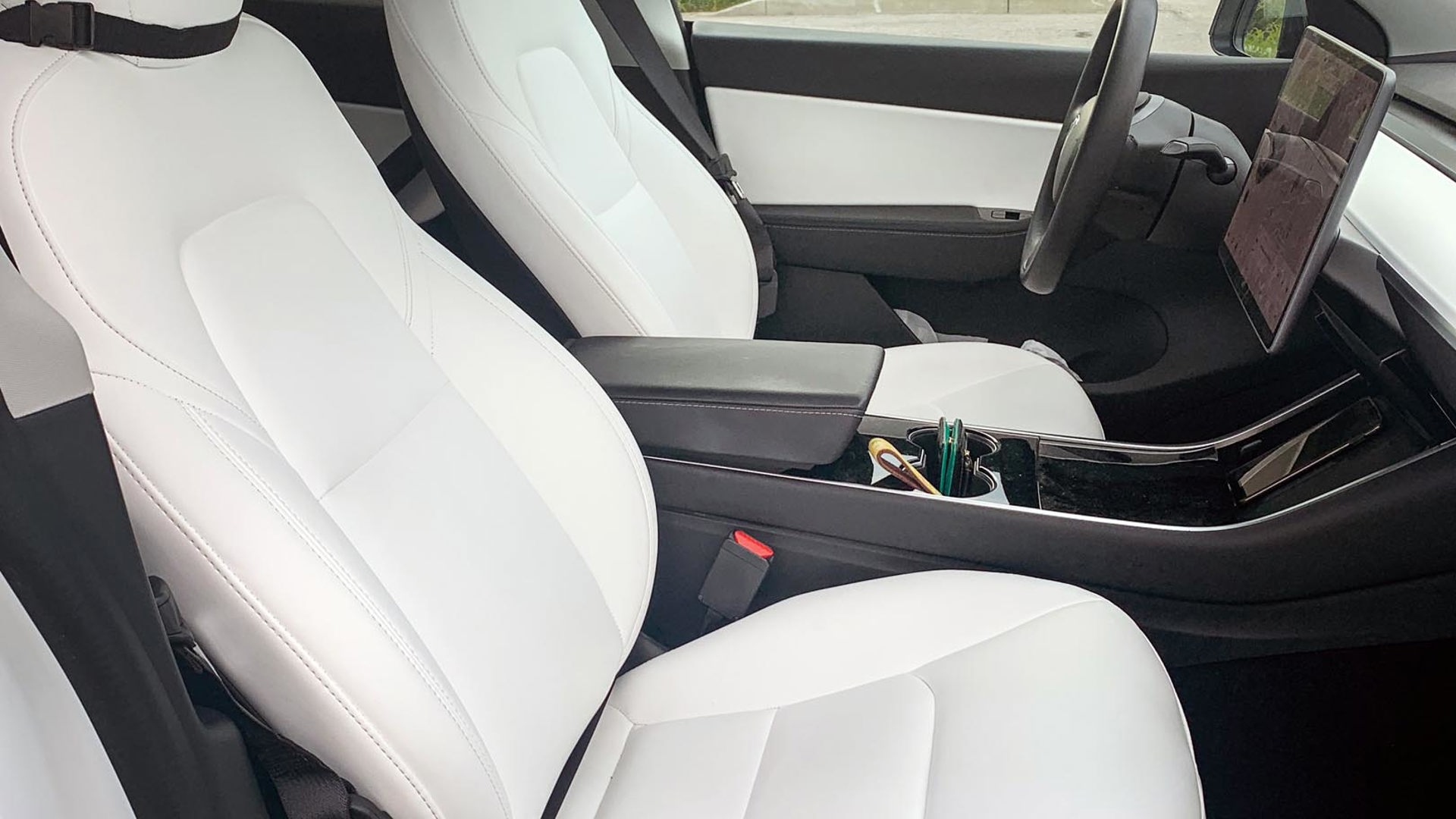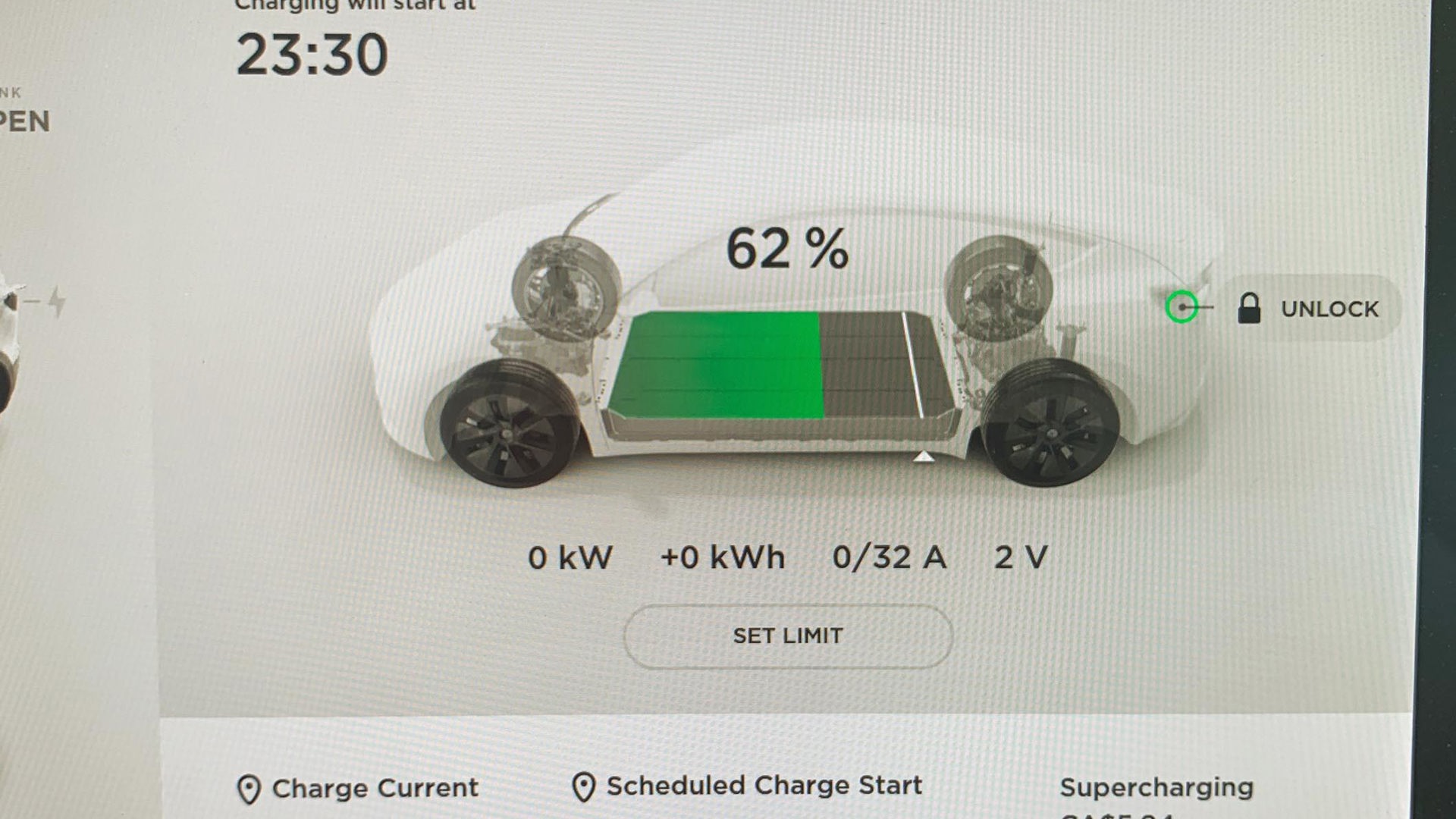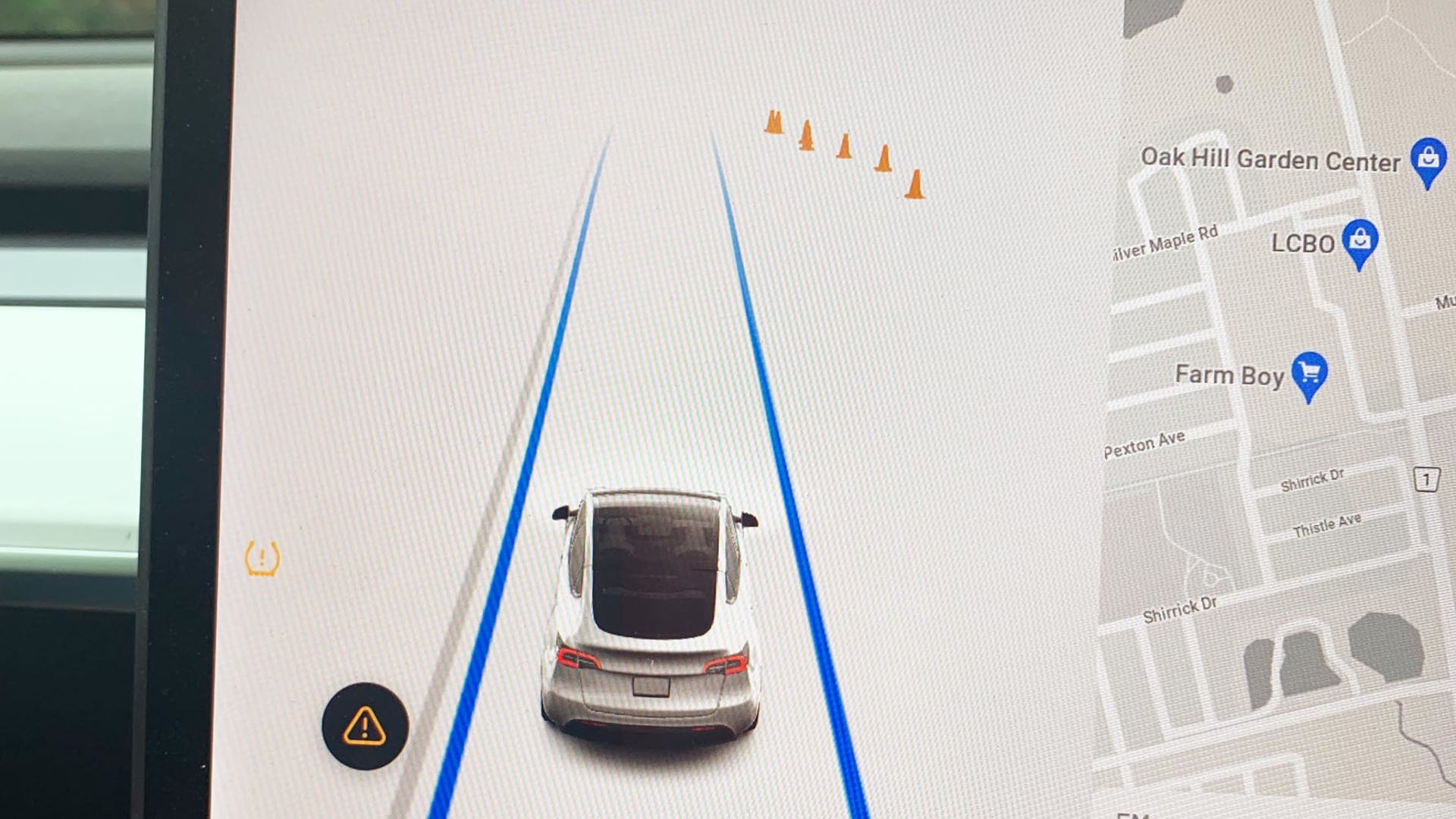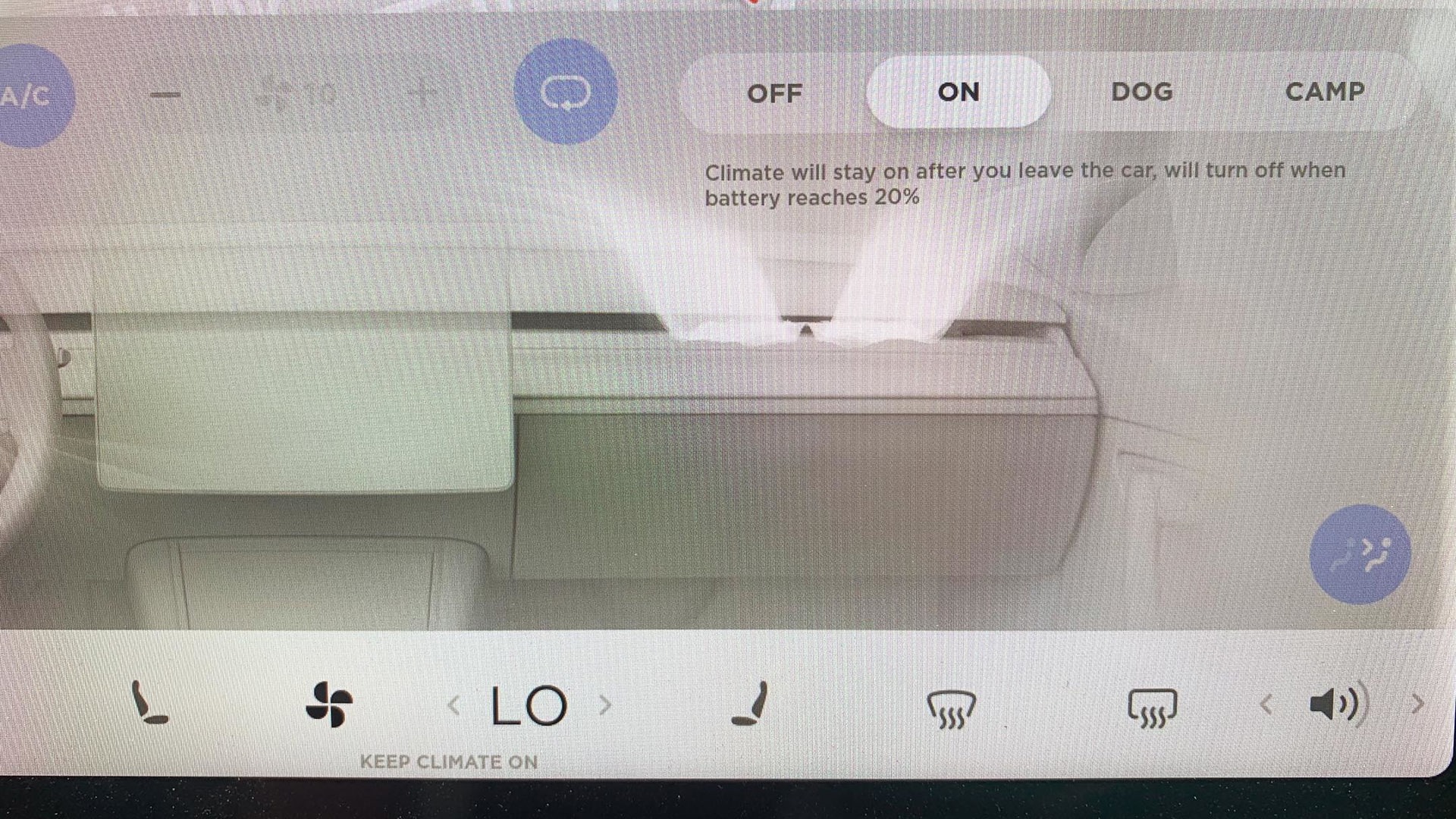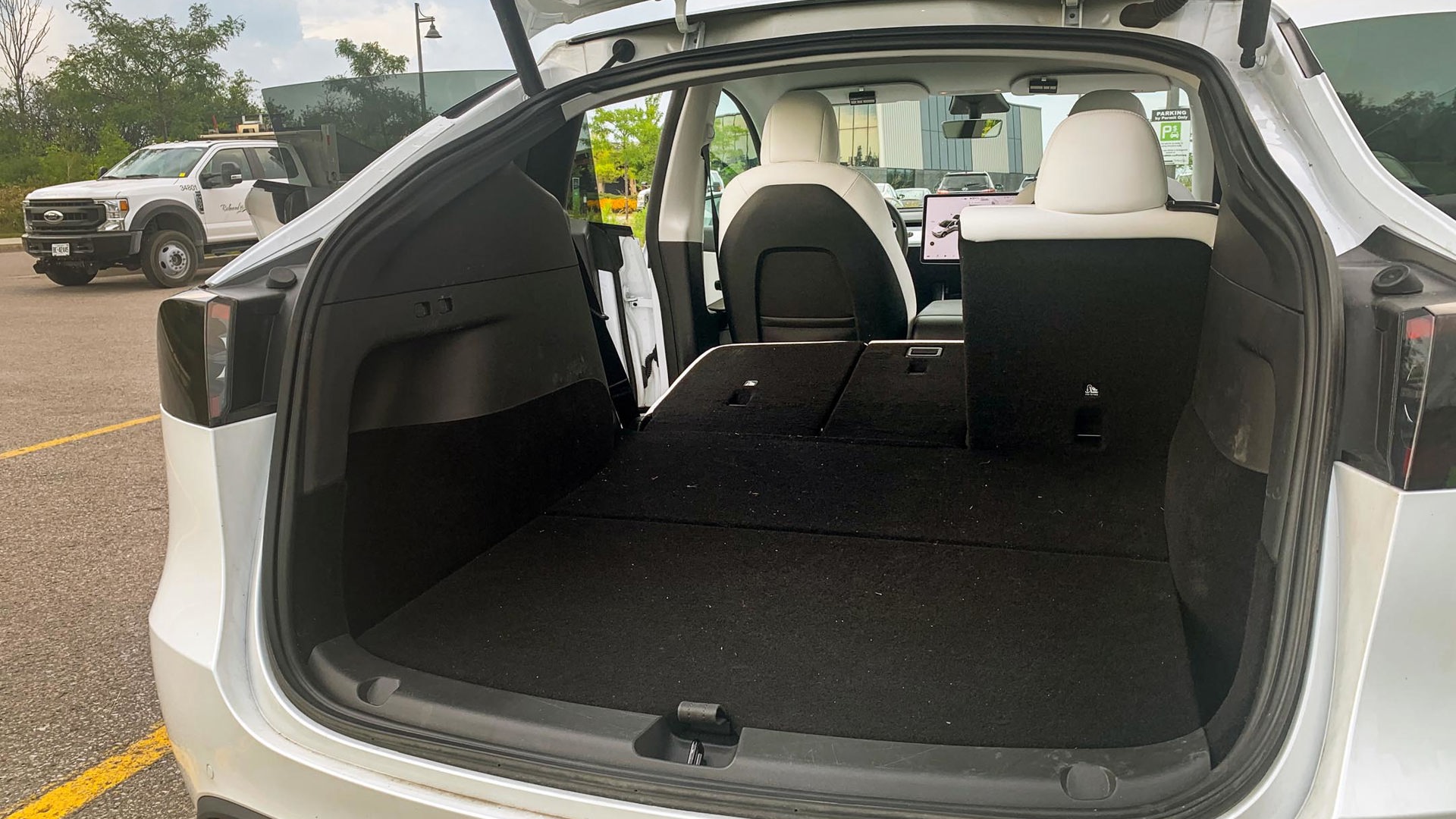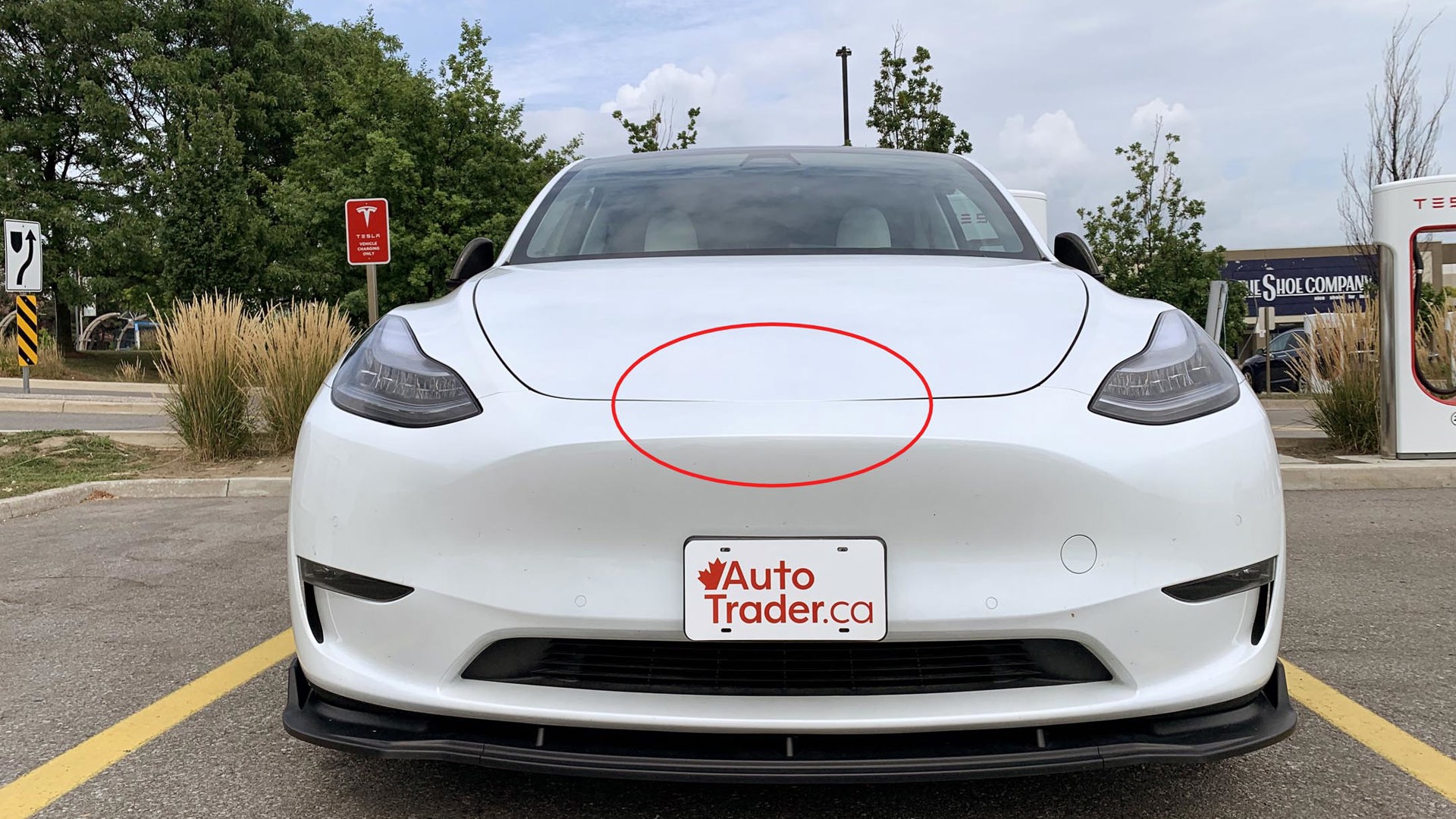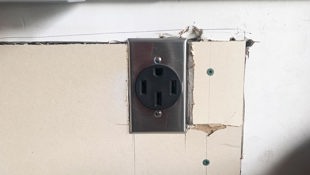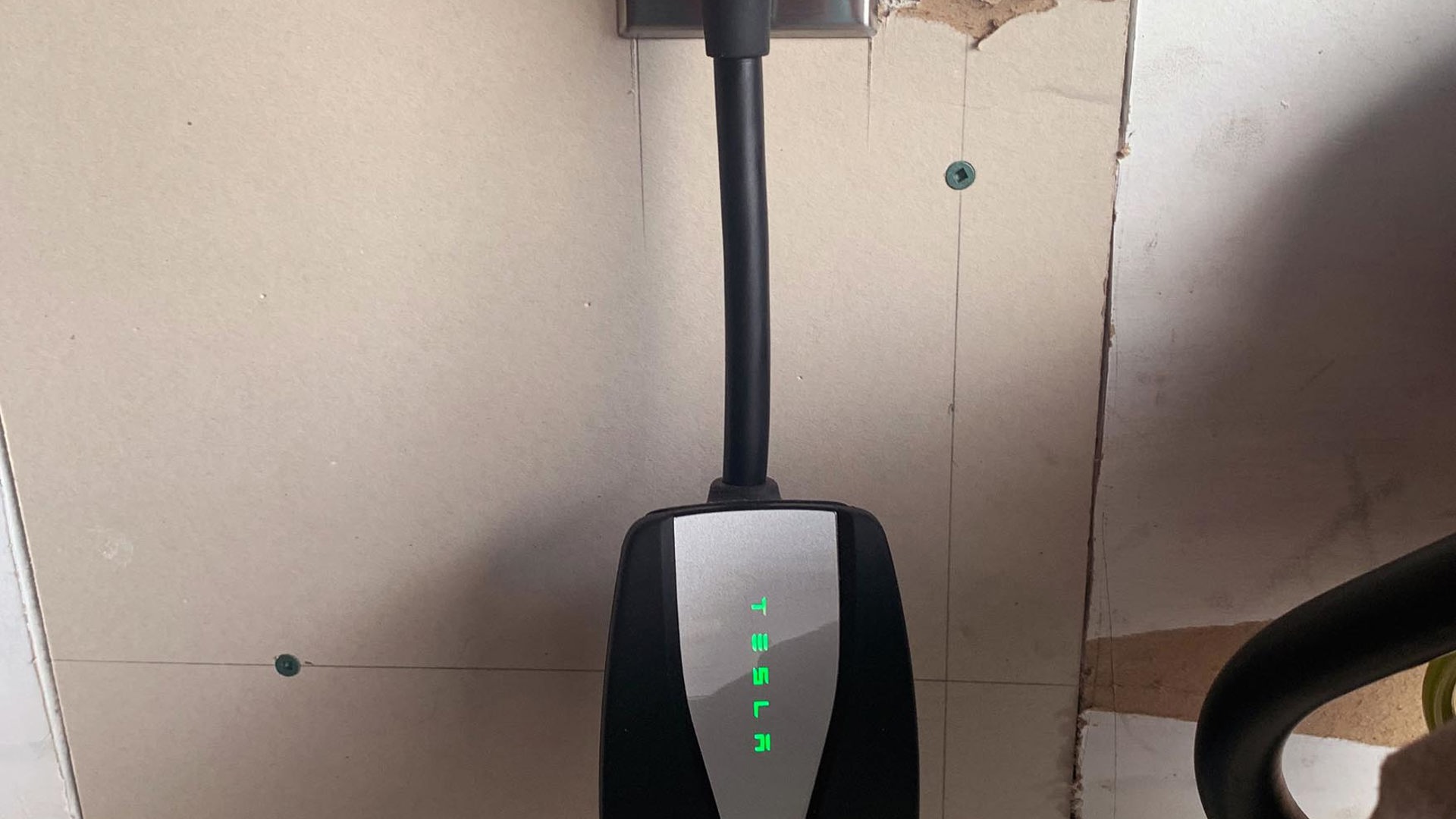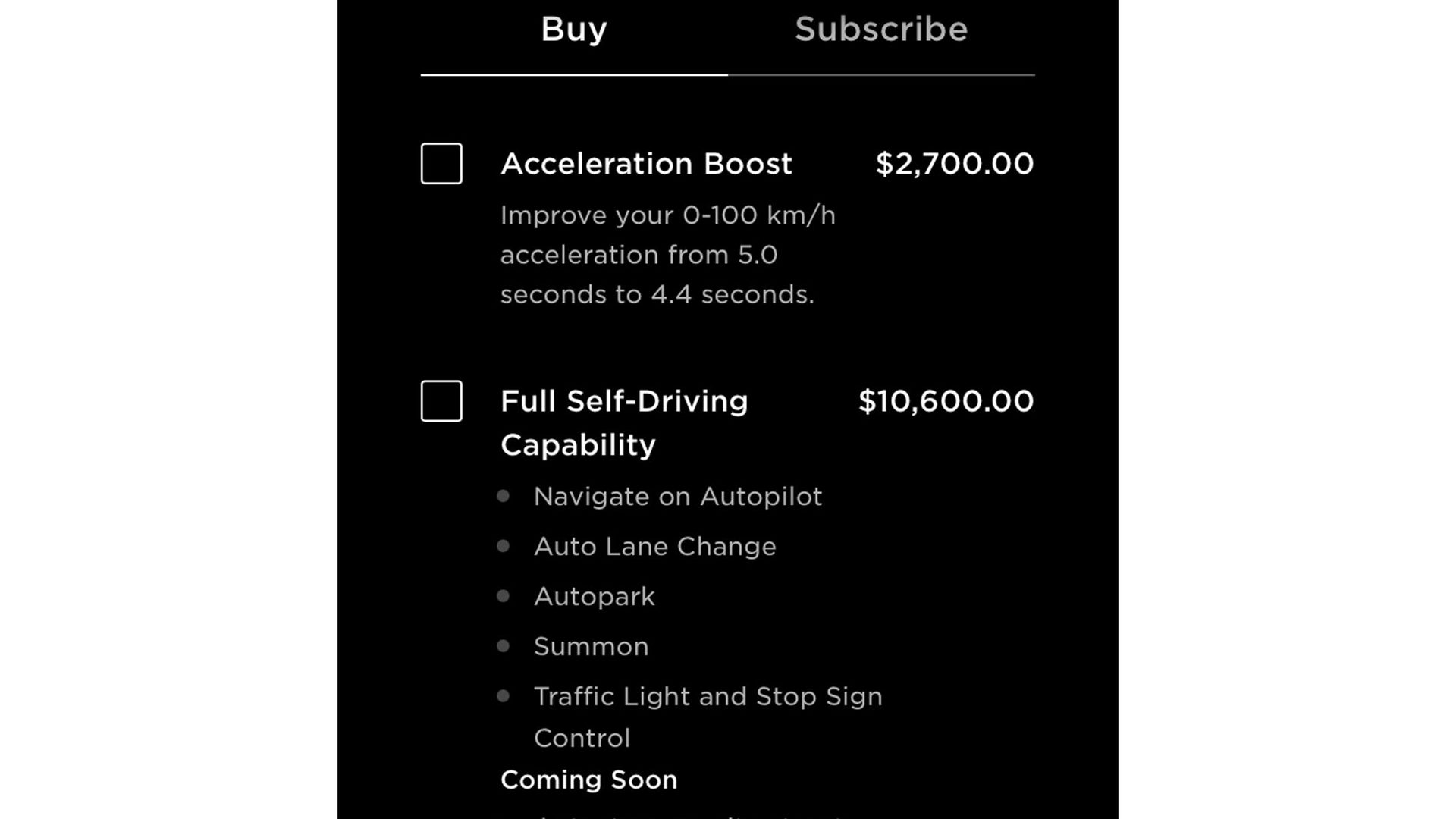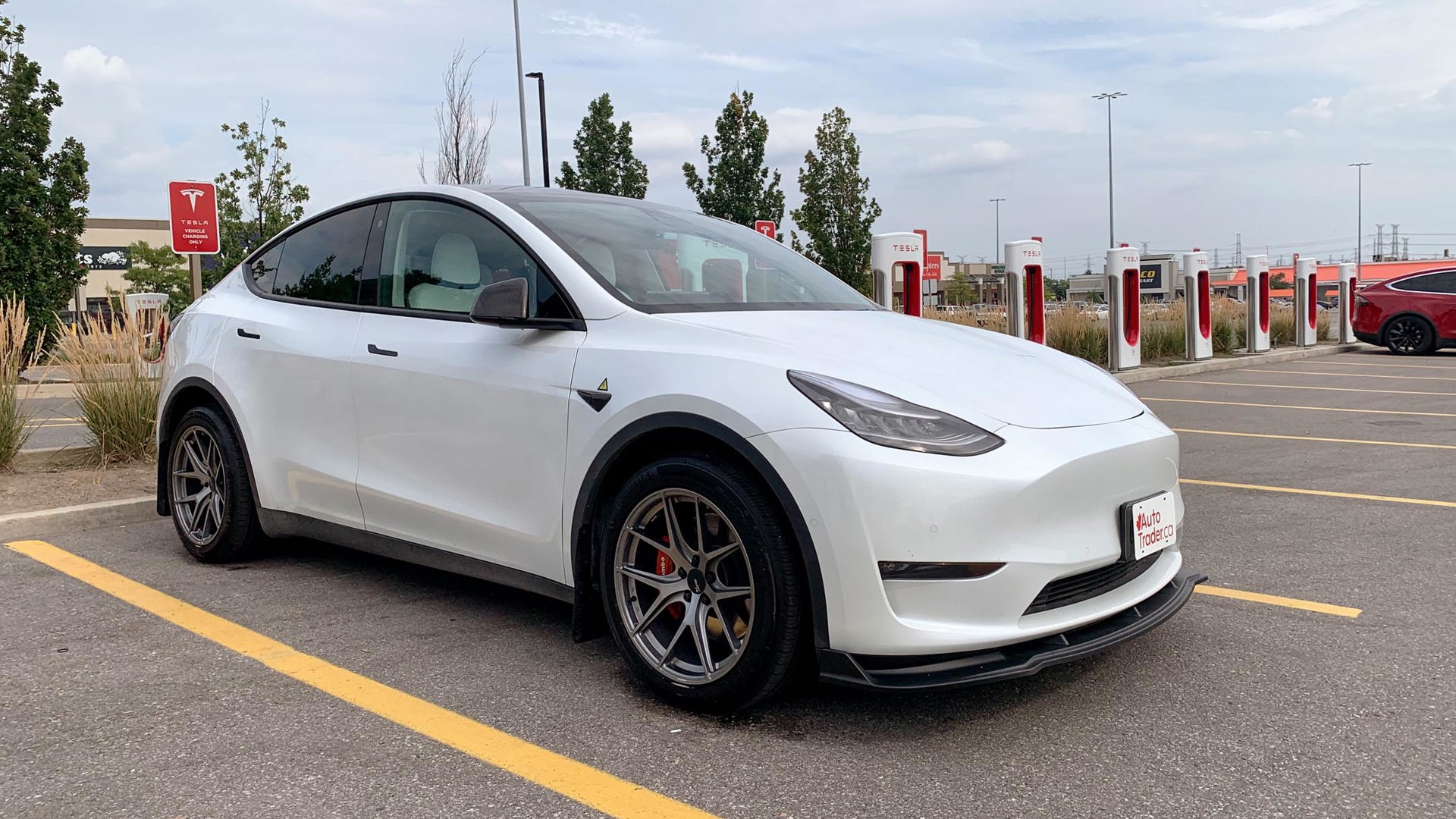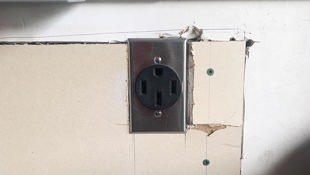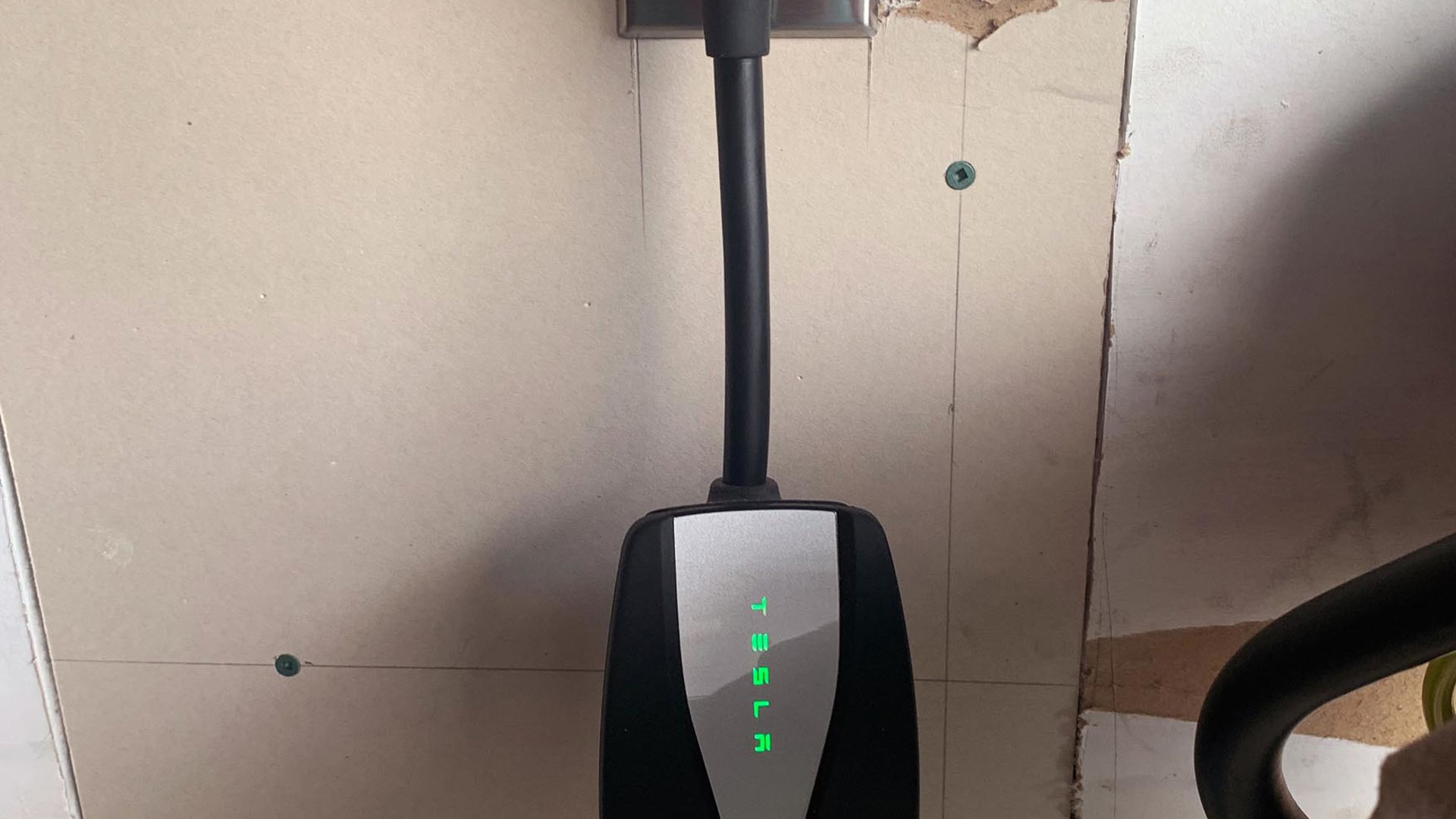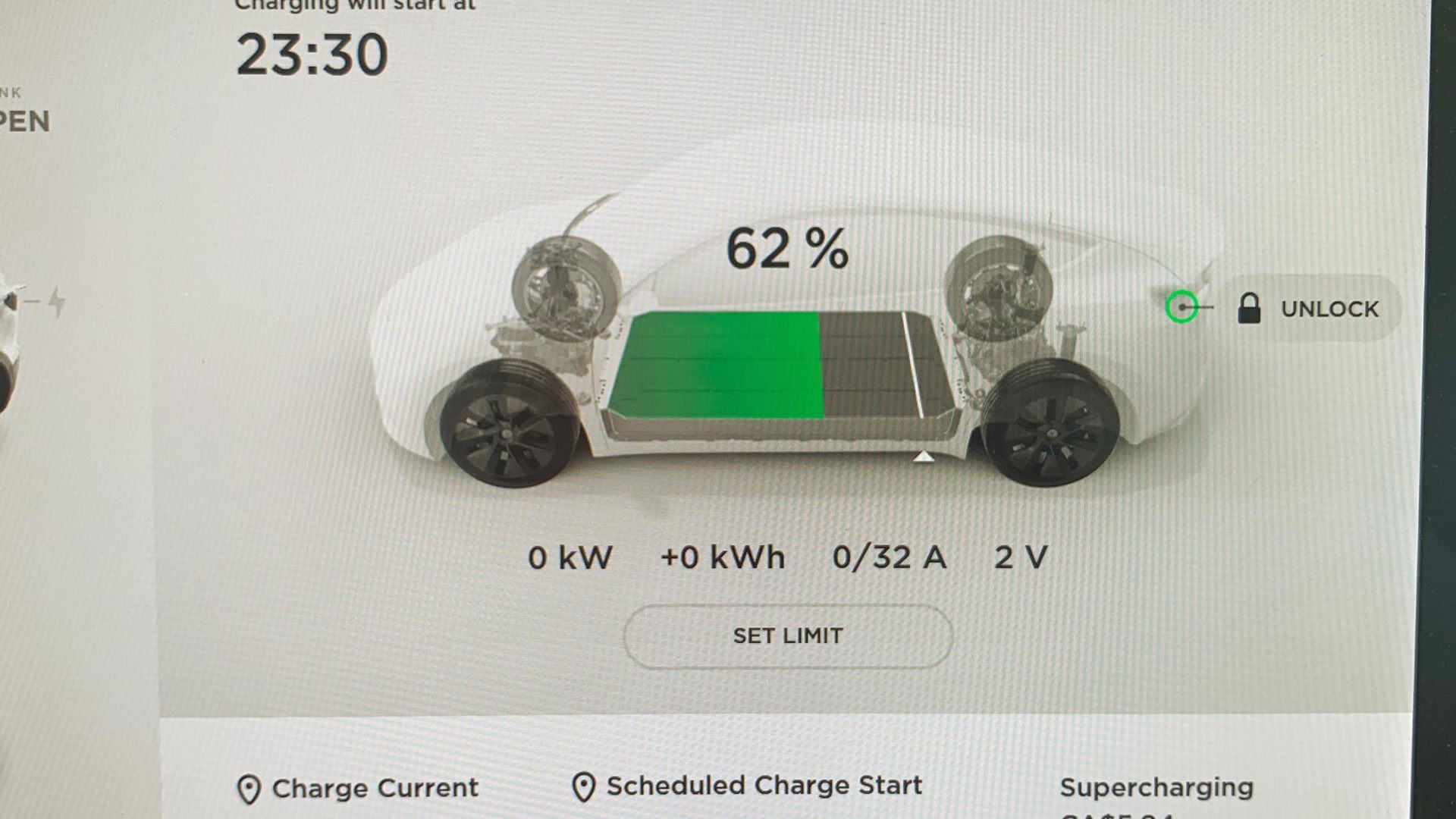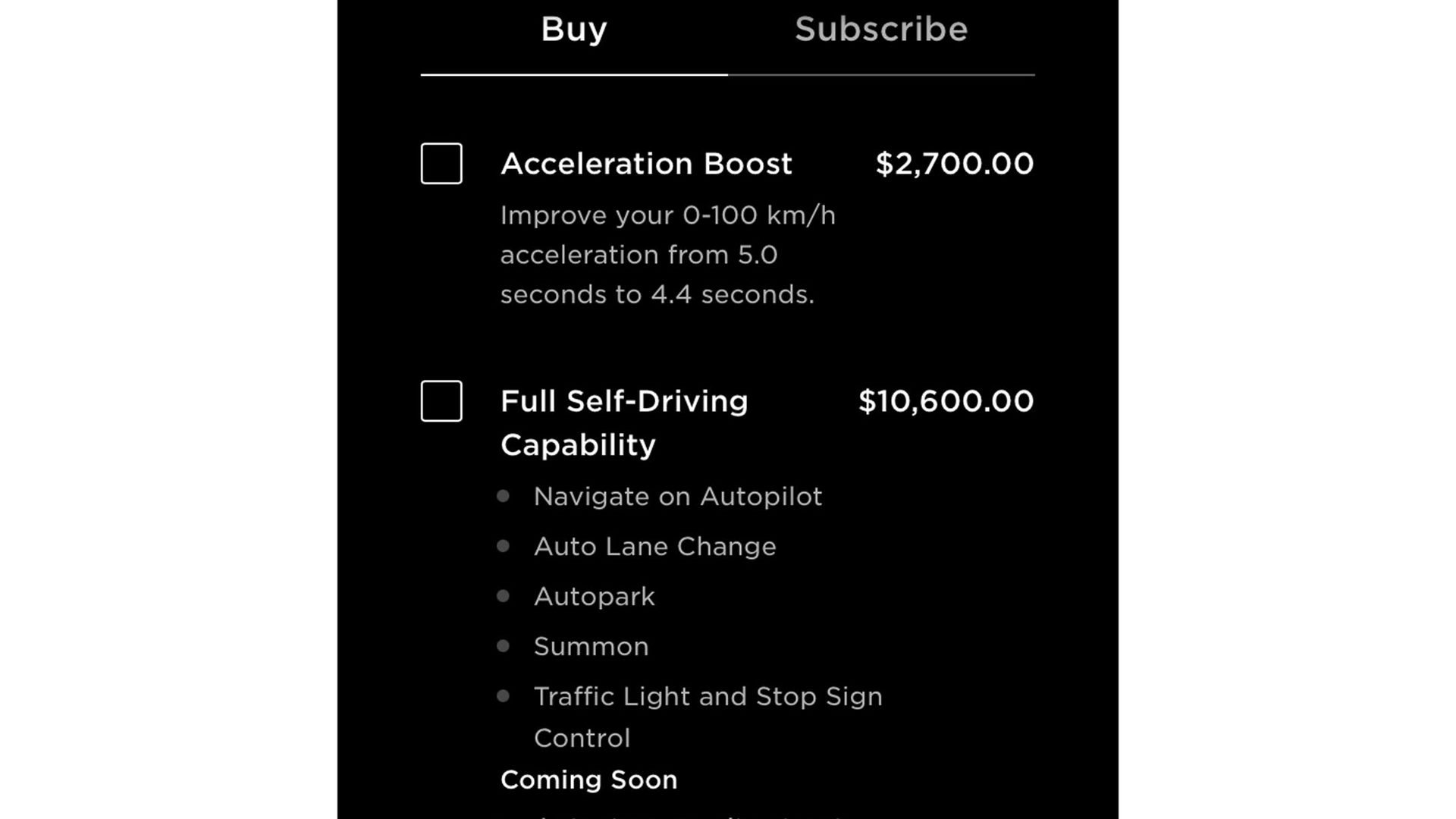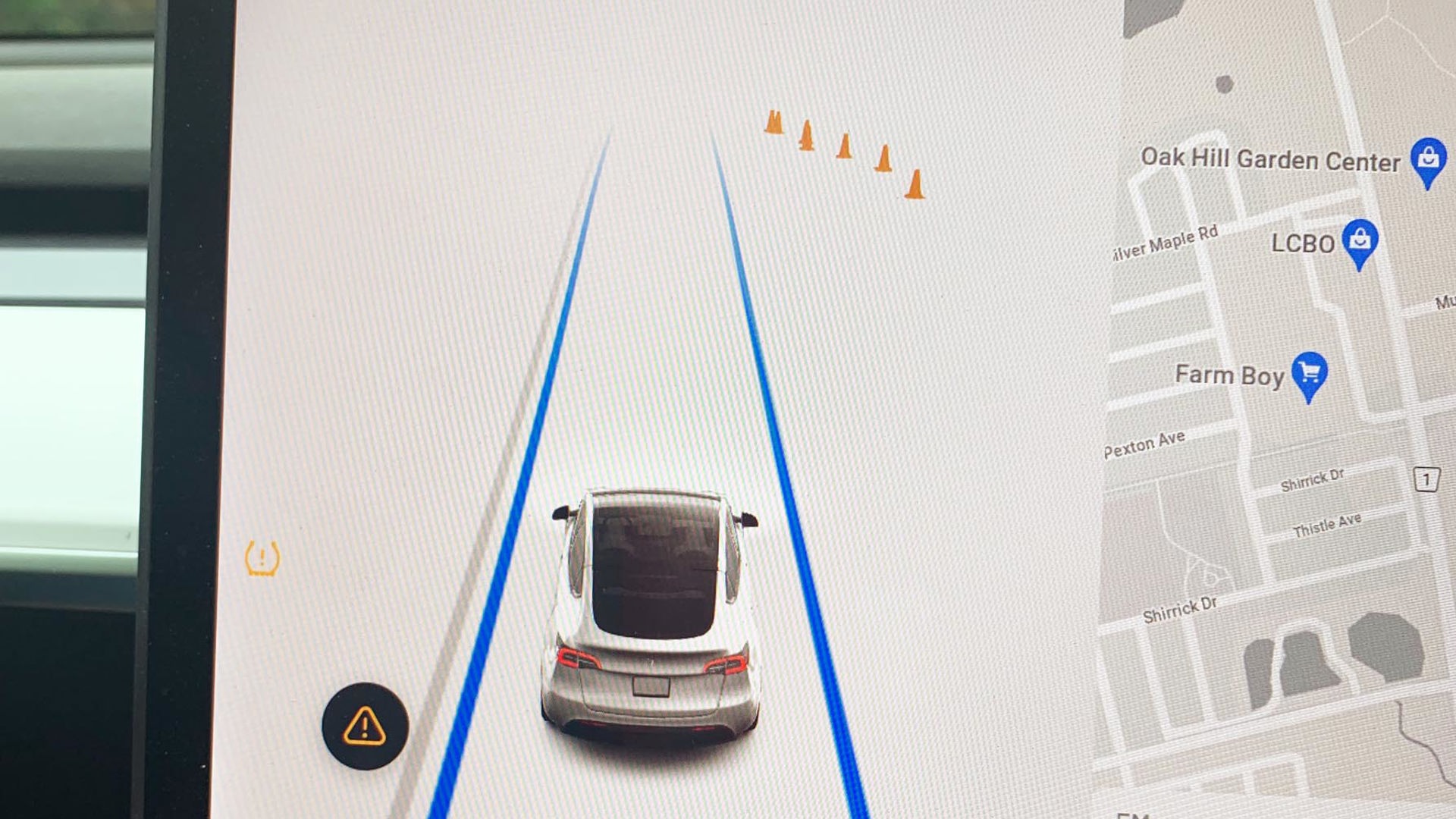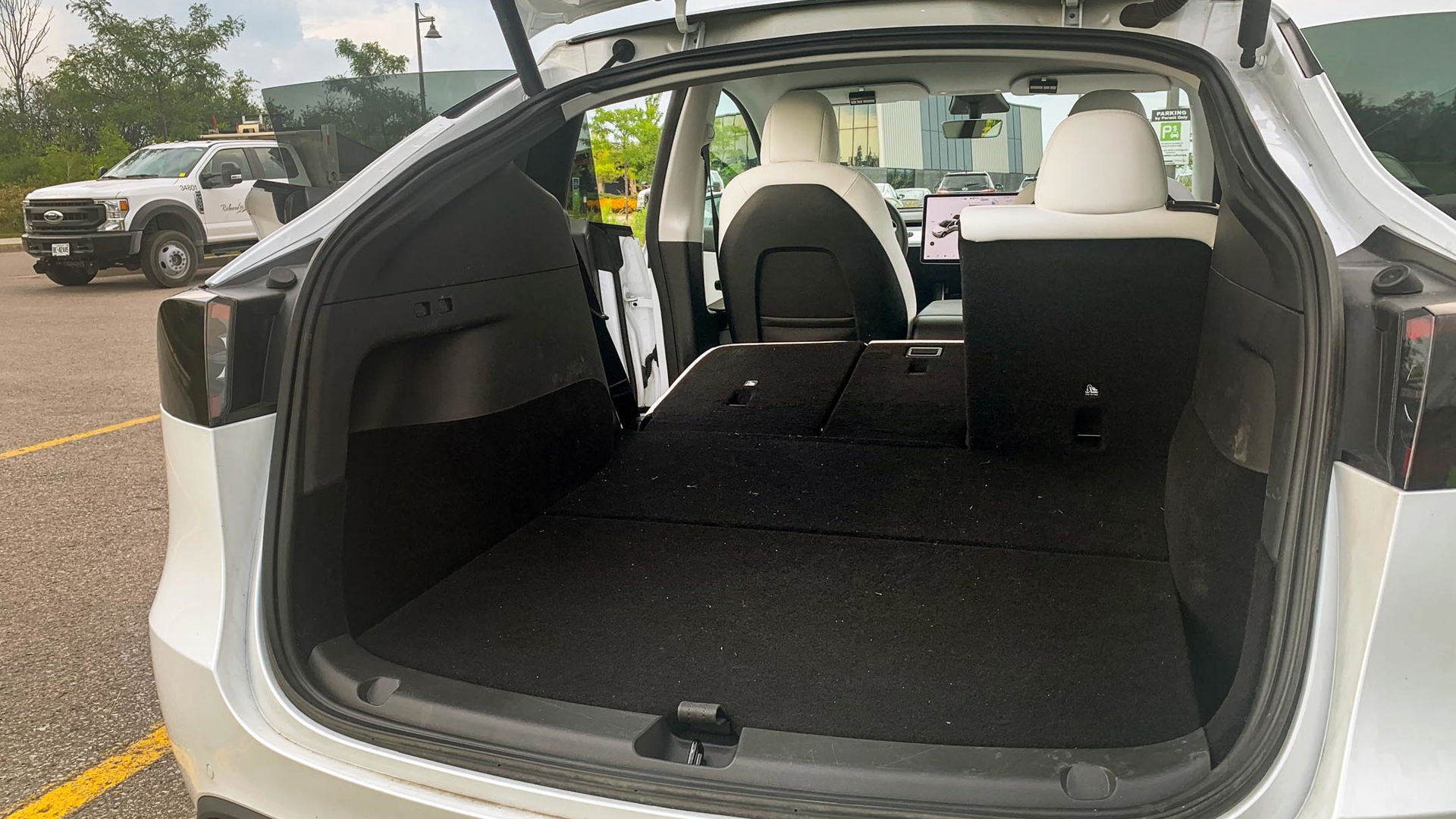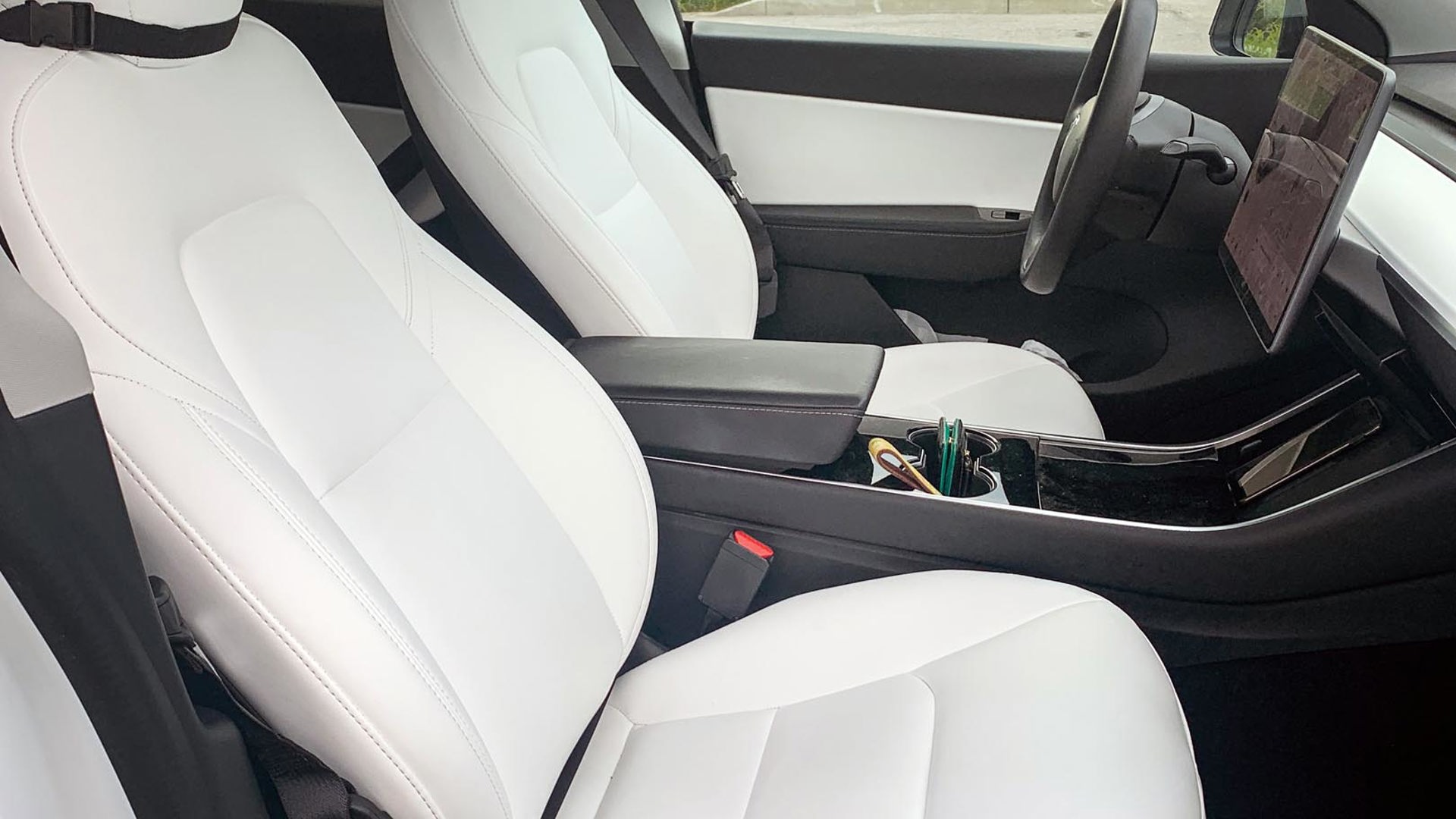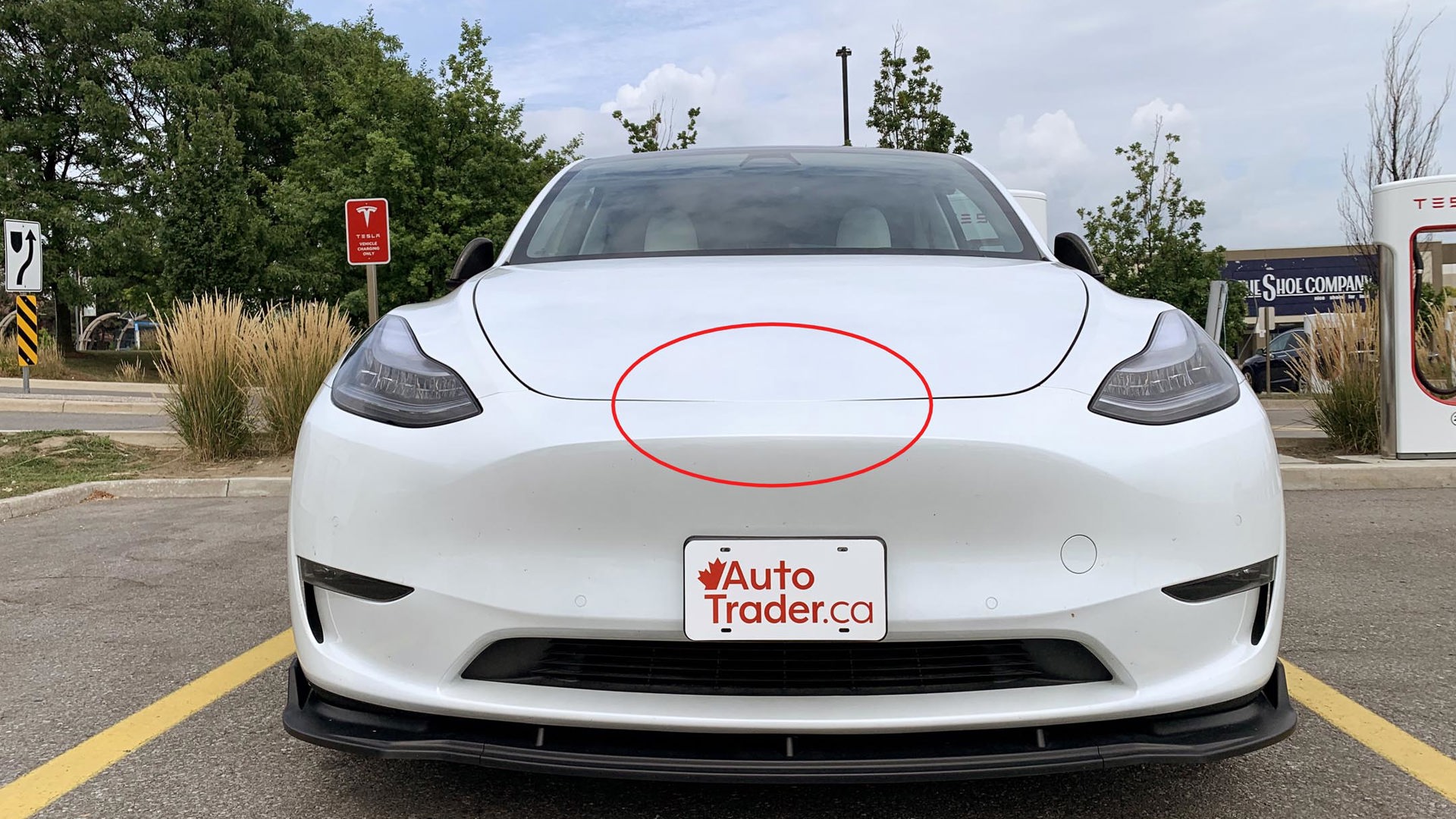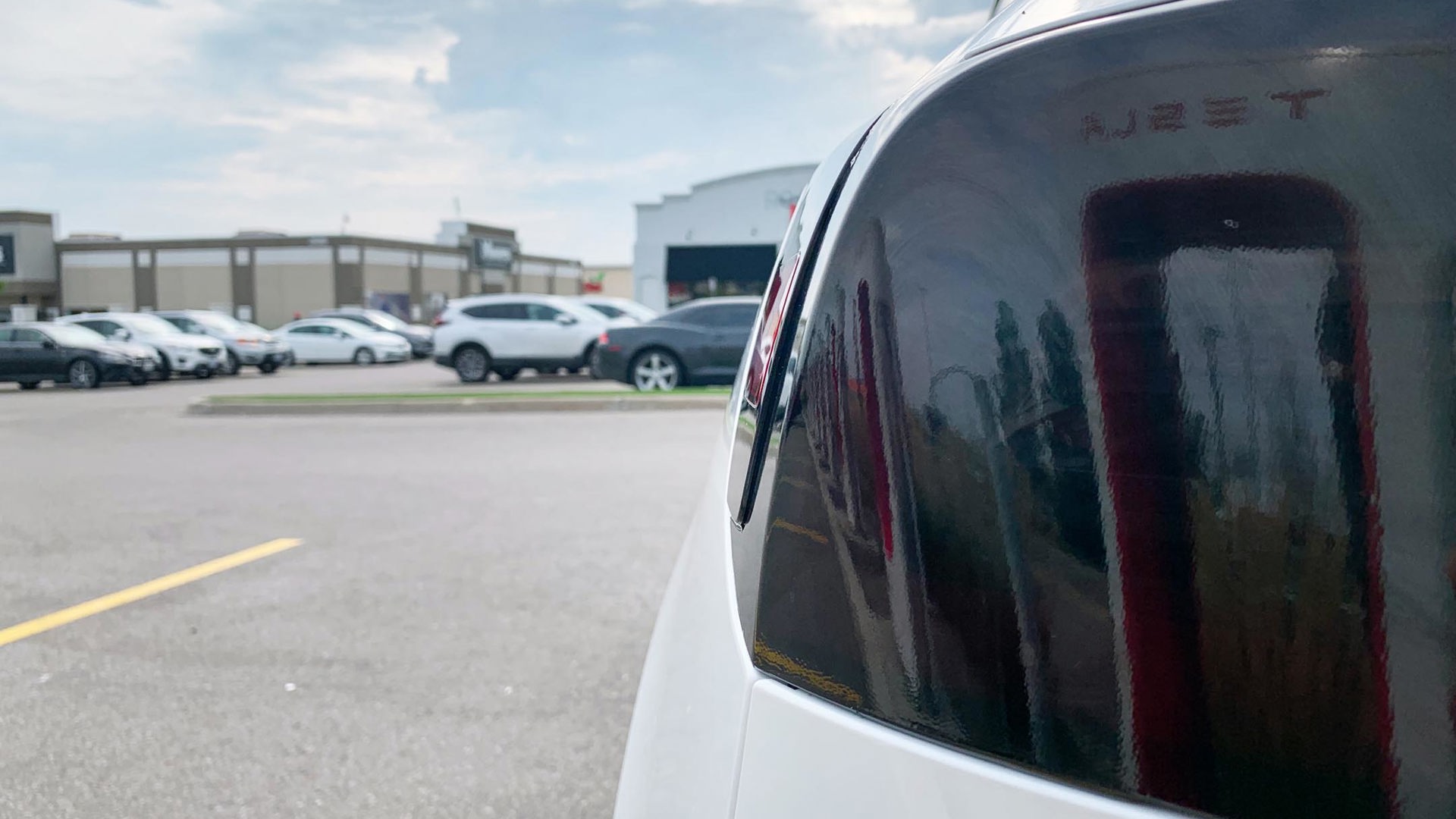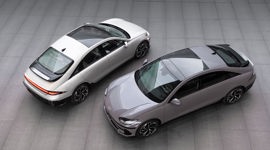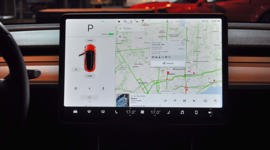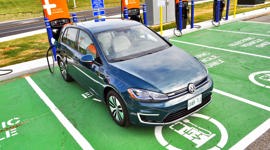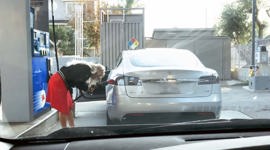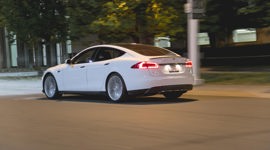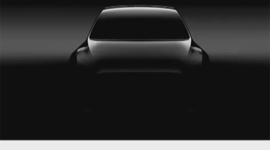I purchased a Tesla Model Y eight months ago because it fulfilled all my requirements for a daily driver. The car I bought had to be full-electric, capable of at least 300 km of range, offer enough cargo capacity, and be within my budget. I didn’t choose a Tesla because I had to get into a Tesla, and I also considered the Jaguar I-Pace and considered potentially waiting for the Mustang Mach-E or the Volkswagen ID.4. I am a passionate, but unbiased car enthusiast, so I’m not particularly attached to any one brand. And when it comes to assessing a vehicle for potential ownership, I am a pragmatist first, so the vehicle’s fit-for-purpose is paramount.
Tesla vehicles have been around for nine years now (excluding the original Roadster), yet over my eight months of ownership, I still got many looks when driving it and got asked many questions about it from friends, family, neighbours, and strangers alike. The hype and curiosity surrounding this brand are as high as ever.
As a brand-agnostic, pragmatic car enthusiast, here are some honest, unbiased answers to those most frequently asked Tesla questions based on my practical, real-world experiences.
Is it fast? How does it drive?
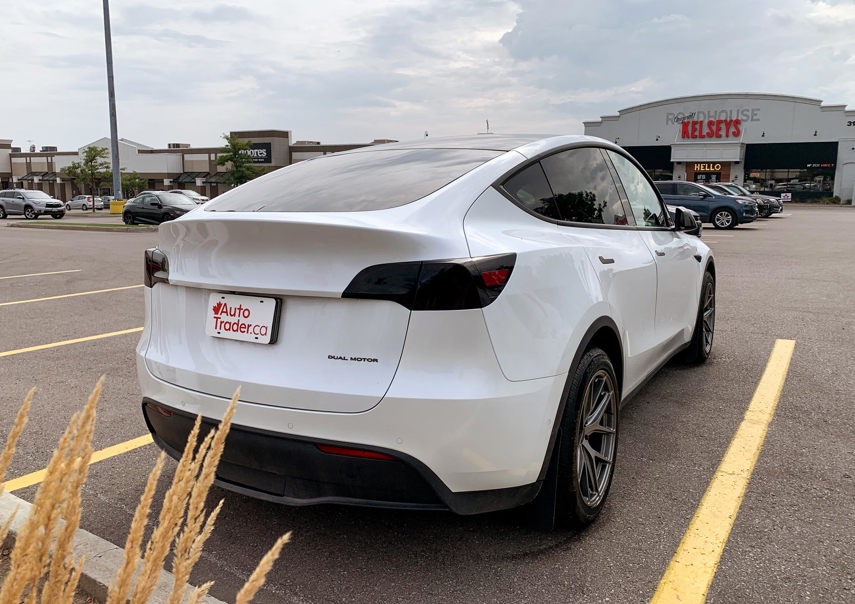
Teslas are plenty fast no matter the model, especially when you consider the speed limits of our roads and highways in North America. Even the lowest-spec Tesla is in the same territory as entry-level Porsche “fast.” By nature of it being an electric vehicle (EV) where power is delivered instantaneously and linearly, the way it accelerates makes my Tesla Model Y feel fast.
Tesla’s steering is quick and the suspension is stiff. Tesla tuned its vehicles to have a sporty feel even for its non-Performance models. I love the quick steering ratio, but in my opinion, the suspension is too stiff. My Tesla Model Y Dual Motor, the brand’s non-Performance compact SUV, with 45 aspect ratio tire sidewalls on 19-inch wheels rides very harshly. To my surprise, the ride feels stiffer than my stock 2015 Subaru WRX, which is a purpose-built performance sedan. Every bump on the road is transferred into the cabin with minimal absorption by the suspension. Teslas fitted with the 20-inch wheel option with a lower-profile tire would ride even harsher over bumps. The Model Y’s stiff suspension enables better handling, but at the expense of a more supple, comfortable ride, which I would prefer.
How do you charge it? How long does it take to charge?
I charge my car at home. When I take a long road trip, I charge at a Tesla Supercharger station enroute. From my experience, a Tesla Supercharger usually replenishes the battery in my Model Y Dual Motor from about 15 per cent to 80 per cent in roughly 30 minutes when not sharing a charging stall. While Tesla Superchargers are widely available in Canada (depending on where you live) and they can charge the car quickly, a lot of people forget that Supercharging is not free, so should only be used on long hauls. A 30-minute charge netting about 300 km of range usually costs me about $20.
Charging at home is the most practical and economical way of owning and operating any EV. You can charge a Tesla on a standard 120V outlet (known as Level 1 charging), but that is simply too slow to be practical for most people. To charge at home at a reasonable speed, I had to install a 50A circuit in the garage. With the high-amperage circuit (known as Level 2 charging), I can easily replenish at least 80 per cent of the charge within the 10 to 12 hours overnight that the vehicle is parked.
How far can it go on a single charge?
An EV’s range depends on the model and how it is driven. Just like gasoline vehicles, a heavy foot on the go pedal will deplete the energy source faster and impact milage. Range figures for Tesla’s lineup are rated from as low as 150 km to 500 km depending on the model. For my Model Y Dual Motor and considering my spirited style of driving in typical mixed city and highway patterns, I am confident it can travel about 400 km on a full charge. In practice though, I never need to drive that amount of distance without charging in between. Since I charge at home, I usually plug it in every three days or so to recharge whenever the battery is down to about 50 per cent, so I have never felt range anxiety.
How much are you saving on gas?
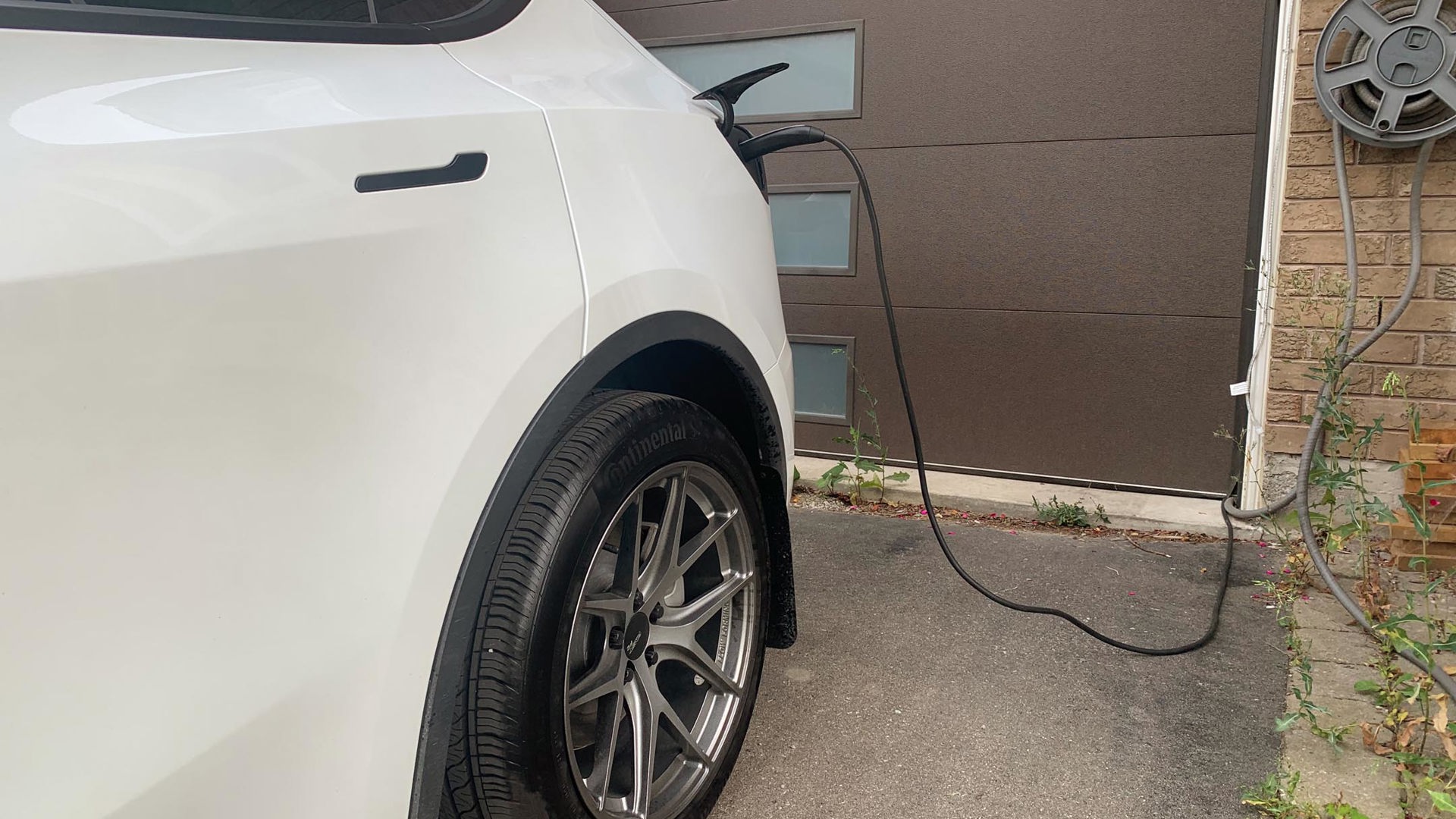
I get asked this a lot, but there’s no easy answer. Let’s convert energy consumption to dollar consumption to put this into perspective.
Using some very crude math, I can compare my Tesla Model Y Dual Motor with a similarly sized gas car that consumes roughly eight litres of fuel per 100 km of driving. If it uses regular fuel at $1.30 per litre, that works out to $10.40 per 100 km driven. If the car requires 91-octane fuel at $1.60 per litre, that would be $12.80 per 100 km driven.
With my spirited style of driving, my Model Y has operated at about 32 kWh/100 km of electricity consumption over a period of one winter on snow tires and half a summer on all-season tires. Note that Tesla rates this model at a much lower 17.3 kWh/100 km of consumption. I only charge overnight at home at an off-peak electricity rate of $0.082 per kWh. That works out to $2.64 per 100 km driven.
What is Autopilot? What is Full Self-Driving? Can it drive itself?
“Autopilot” is a Tesla marketing term for its lane-centring and adaptive cruise control features. Many other manufacturers also offer this same capability in their gas vehicles or EVs.
Tesla’s Autopilot can be activated on highways or local streets and will keep the car in its lane without any steering input from the driver. It will also maintain the set speed or slow down to adapt to the speed of the car in front, even coming to a complete stop if necessary. The car will then regain speed when the car in front moves again. Autopilot will not, however, stop for red lights or stop signs and requires the driver’s hands to remain on the steering wheel. The system requires the driver to occasionally apply a slight force to the steering wheel to ensure the driver continues to pay attention. All Teslas sold today come with the Autopilot feature.
From my experience, Autopilot does not drive as smoothly as a human driver. It does not look far enough ahead to anticipate upstream traffic conditions, so it often brakes late, sometimes accelerates a bit too hard off the line, and always keeps too far a distance from the car in front when coming to a complete stop. Because of how Autopilot drives, I do not feel comfortable using the feature under slippery conditions. It will not work on snow-covered roads where lane markers are obstructed. That said, I do find Autopilot to be an extremely convenient feature and I use it every chance I get when I am comfortable with the road conditions.
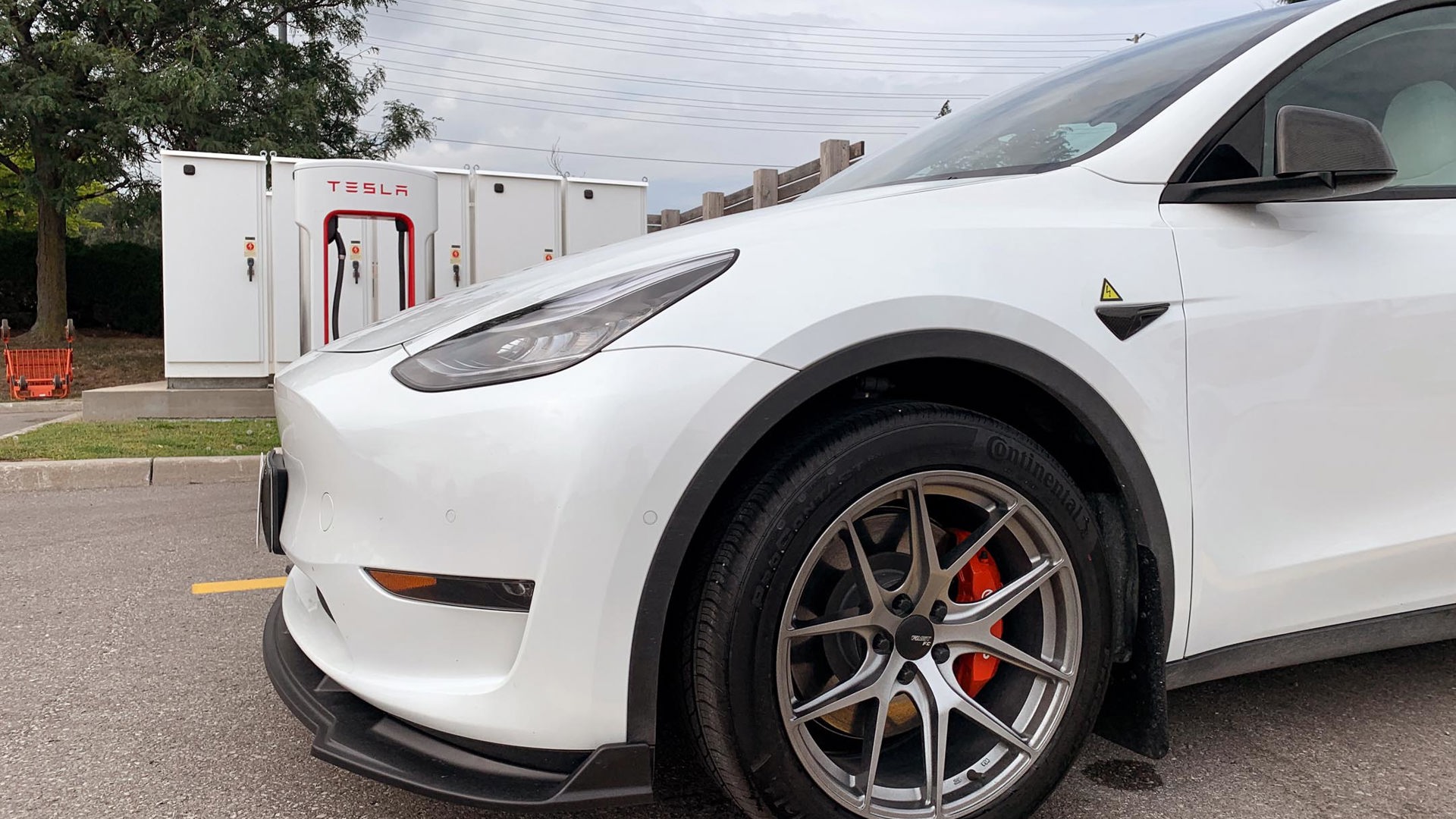
“Full Self-Driving” (FSD) is another Tesla-specific marketing term that has received some criticism for the misleading nature of its name, since the system cannot operate with full autonomy. FSD is a set of features that builds on top of Autopilot. With FSD, the driver can, in theory, simply enter their destination into the navigation system and the car will find the optimal route and drive there. This includes stopping for red lights and stop signs, making left or right turns, changing lanes, and jumping on and off the highway as needed. The FSD feature set also enables the car to park itself and the car can also be summoned to you from a remote location using a mobile app.
It is important to note, however, that just like Autopilot, FSD requires the driver to pay full attention at all times and be ready to take over steering. It will also require the driver to occasionally provide steering input to prove they are still being attentive. Further, Tesla considers FSD to be in beta form, meaning it is still in its testing phase and not a finalized, fully proven offering. Tesla includes a very explicit message in the car’s user interface to stress the importance of additional caution and attention when using this feature.
Unfortunately, I cannot attest to how well these FSD functions work in real-world situations as I have never experienced them myself. In Canada, the FSD feature set is currently a $10,600 upgrade at the time of this writing. Yes, that is a $10,600 upgrade for a set of features that are still under testing.
Don’t the white seats get dirty?
Of course the white seats get dirty, but they are not nearly as prone to staining as many people believe. From my experience, dirt or dye from clothing does not transfer easily onto the white seats. After months of regular use, the seats still looked clean. I started to see a film of surface-level dirt after about six months, the kind of slow accumulation where you don’t notice unless you examine it closely or until you wipe down a section and see the original colour underneath. I have since applied fabric protectant and that’s made it easy to keep the seats looking like new just by wiping them down every three months or so.
Is the build quality as bad as everyone says?
Build quality refers to fit and finish, how well individual components are put together, and the consistency of such build quality across the hundreds of thousands of vehicles that are manufactured. It is not a measure of the quality of materials used, for example, leather versus fabric, or metals versus plastics. With that understanding, Tesla’s material choices are comparable to other manufacturers, but its build quality is not as refined as most other brands especially when compared to other similarly priced vehicles.
I can identify only two examples of sub-par build quality from my personal vehicle. First, the front edge of the hood doesn’t line up exactly flush with the front edge of the front bumper. Second, the charge door aligns quite poorly with the rest of the bodywork when it is closed. I found nothing wrong with the build quality in the interior of my vehicle.
I noticed those flaws because I looked for them, however, they do not bother me. It has never crossed my mind to complain to Tesla or request to have those flaws repaired. I have shown the vehicle to dozens of people and none of them nitpicked on those two issues.
It is worthy of noting that Tesla is improving its assembly process at a very rapid pace. The build quality of the newest vehicles coming off its assembly lines now is miles ahead of vehicles from just a year prior.
Is it any good in the winter?
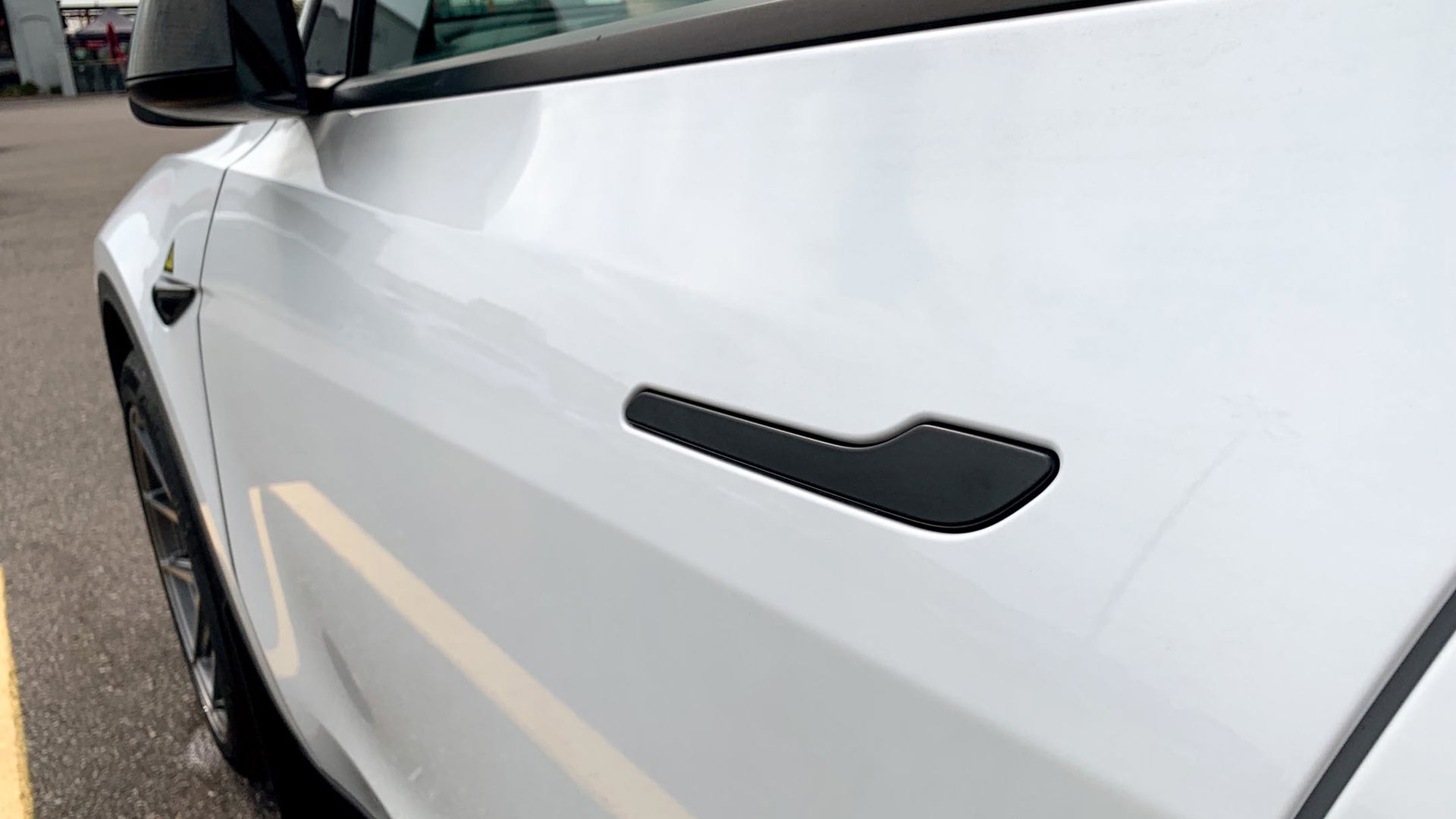
For several reasons, it is much easier to live with a Tesla in the winter if it can be parked in a garage overnight.
First, all Tesla models have frameless windows. To open the door, the window needs to automatically retract about half an inch to clear the window trim. During our Canadian winters in most parts of the country, iced-up windows in the morning are a common occurrence if the car is parked outdoors overnight. From my experience, the power window is strong enough to break itself loose from ice buildup, but I am not a fan of exerting unnecessary force on moving components. All cars with frameless windows have this same issue in the winter, not just Teslas.
Second, the Model Y’s door handles are embedded inside and flush with the doors. To get the handle out, you push in one end of the handle to pivot the other end out from inside the door. If the handle is covered under a sheet of ice flush with the door, opening the door becomes challenging. Tesla’s Model S and Model X have electronically actuated door handles which, further complicates the matter when covered in snow or ice.
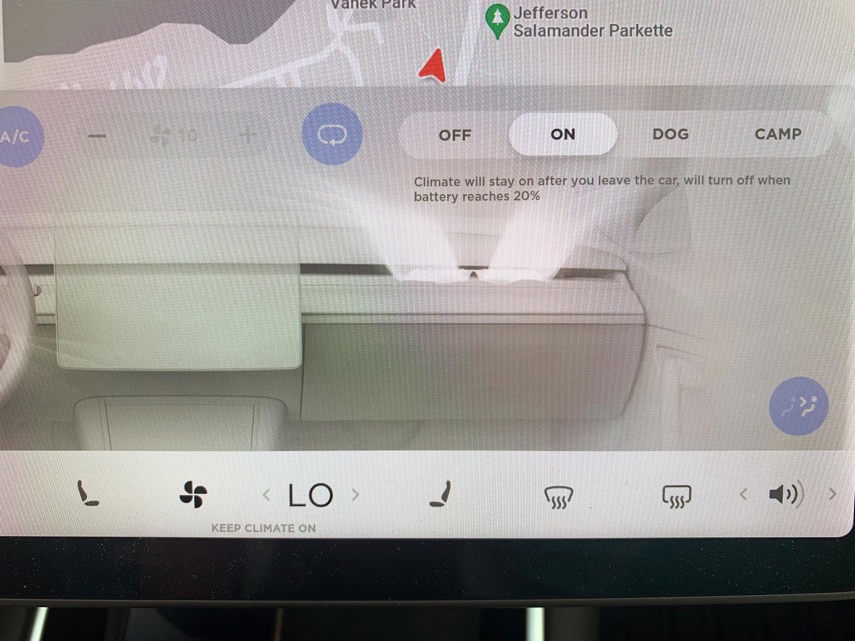
Lastly, since charging typically occurs overnight when it is coldest, there will be less wear and tear on the battery and related charging systems if the car is kept at garage temperatures overnight. The battery management system needs to bring the battery up to temperature to allow proper charging. Keeping the car at garage temperatures makes that process easier on the system.
One of my favourite features of my Tesla in the winter (and most other EVs) is that it can be started remotely and the cabin can be warmed up well before getting into the vehicle. The heater can also be kept running to keep the cabin warm for an extended period without exhausting any pollutants, unlike a gas vehicle. This, for example, can come in handy when having to wait for someone while sitting in the car outside in the dead of winter.
On the road, there are no major differences between an EV and a gas vehicle when it comes to winter driving. Teslas come in either rear-wheel-drive (RWD) or all-wheel-drive (AWD) forms. Both of those configurations have the same driving dynamics as their gasoline counterparts. EVs tend to weigh significantly more than an equivalent gas vehicle, so it is that much more important to equip them with snow tires to minimize stopping distances in snowy weather.
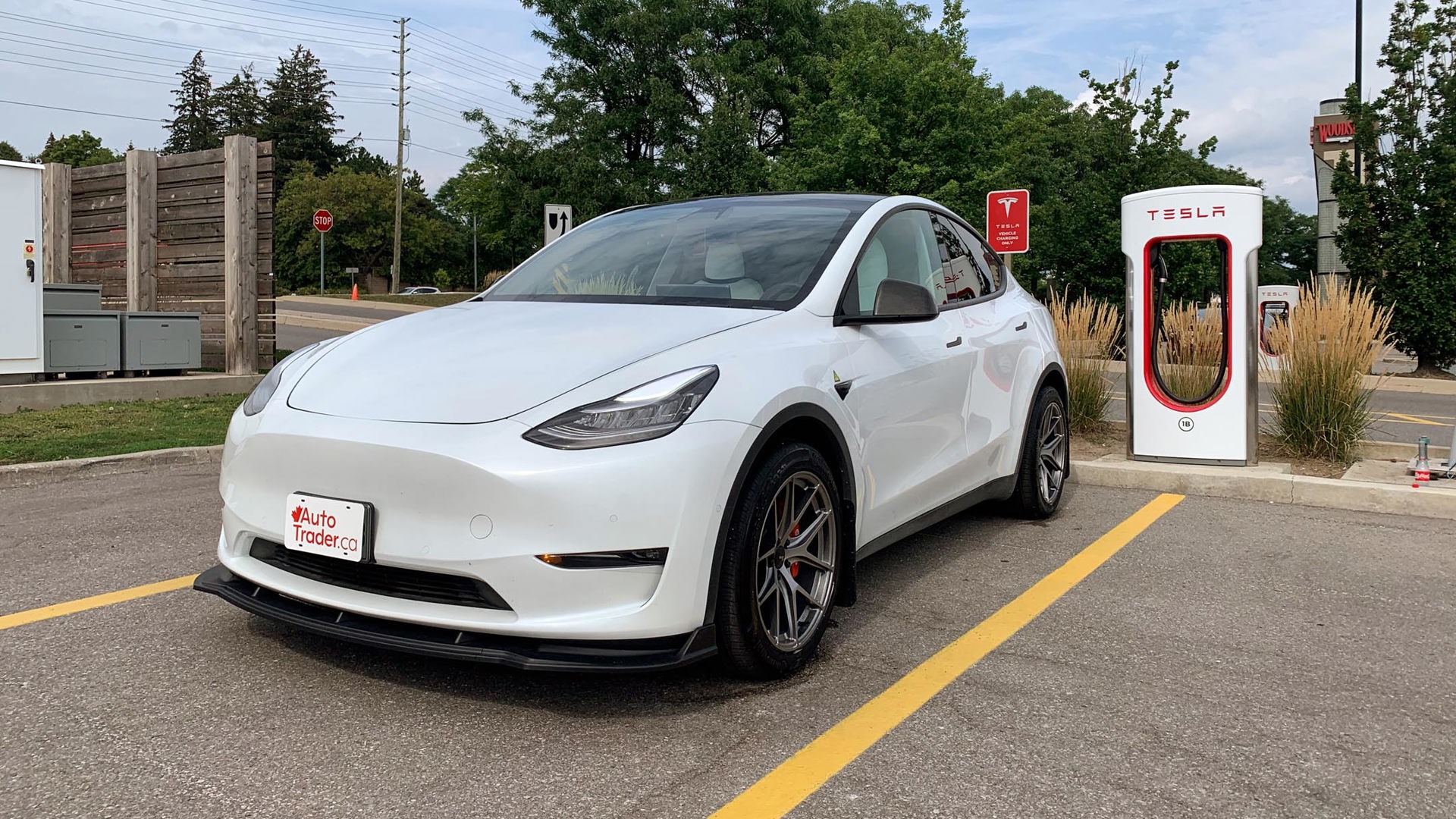
So there you have it. My unbiased answers to questions I heard most throughout my ownership of a Tesla Model Y. Teslas are great but they are not the only EVs out there nor are they the absolute best. The EV evolution is happening and as a car enthusiast, I felt it was the right time for me to jump into an EV. Improvements in the EV market are being made at an astounding rate with every iteration of every new model on the market. If you’ve been even considering switching to an EV, you owe it to yourself to shop around.
